Composite walkways represent the perfect fusion of durability and aesthetic appeal for modern outdoor spaces. These innovative pathways are up to 80% lighter than traditional concrete and steel walkways while offering superior corrosion resistance to water and airborne chemicals. Composite materials deliver the warm, rustic appearance of natural wood without the risk of rotting, warping, or splintering. Whether you're designing a simple garden path or an elaborate outdoor feature, composite walkways provide exceptional versatility with minimal maintenance requirements. From colorful patterned designs to sophisticated lighting integration, these pathways transform ordinary outdoor spaces into stunning landscape features that withstand weather challenges while maintaining their visual appeal for years.
1. Colorful Patterned Composite Walkway Design
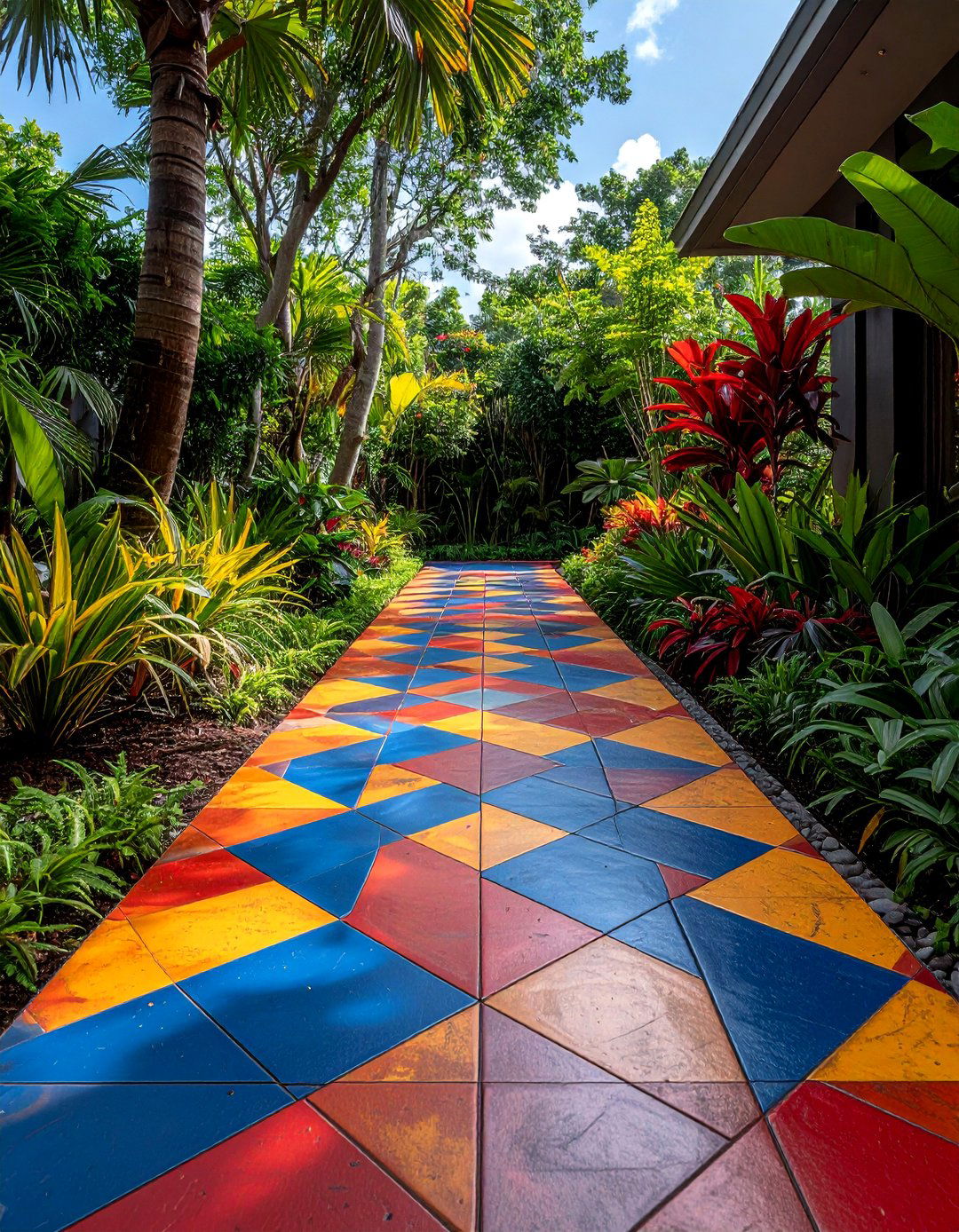
A vibrant composite walkway brings life to your garden area with intricate patterns and dynamic hues integrated into durable materials. This design approach utilizes bold color combinations and geometric layouts to create visual excitement while ensuring long-lasting performance. The patterned composite materials resist fading and weathering, maintaining their vibrant appearance through various seasons. These walkways work exceptionally well in contemporary garden settings where artistic expression meets functional necessity. Consider alternating warm and cool tones to establish rhythm along the pathway, or incorporate your home's accent colors for cohesive design integration. The durable composite construction ensures patterns remain crisp and defined despite heavy foot traffic and weather exposure.
2. Eco-Friendly Composite Walkway with Recycled Materials
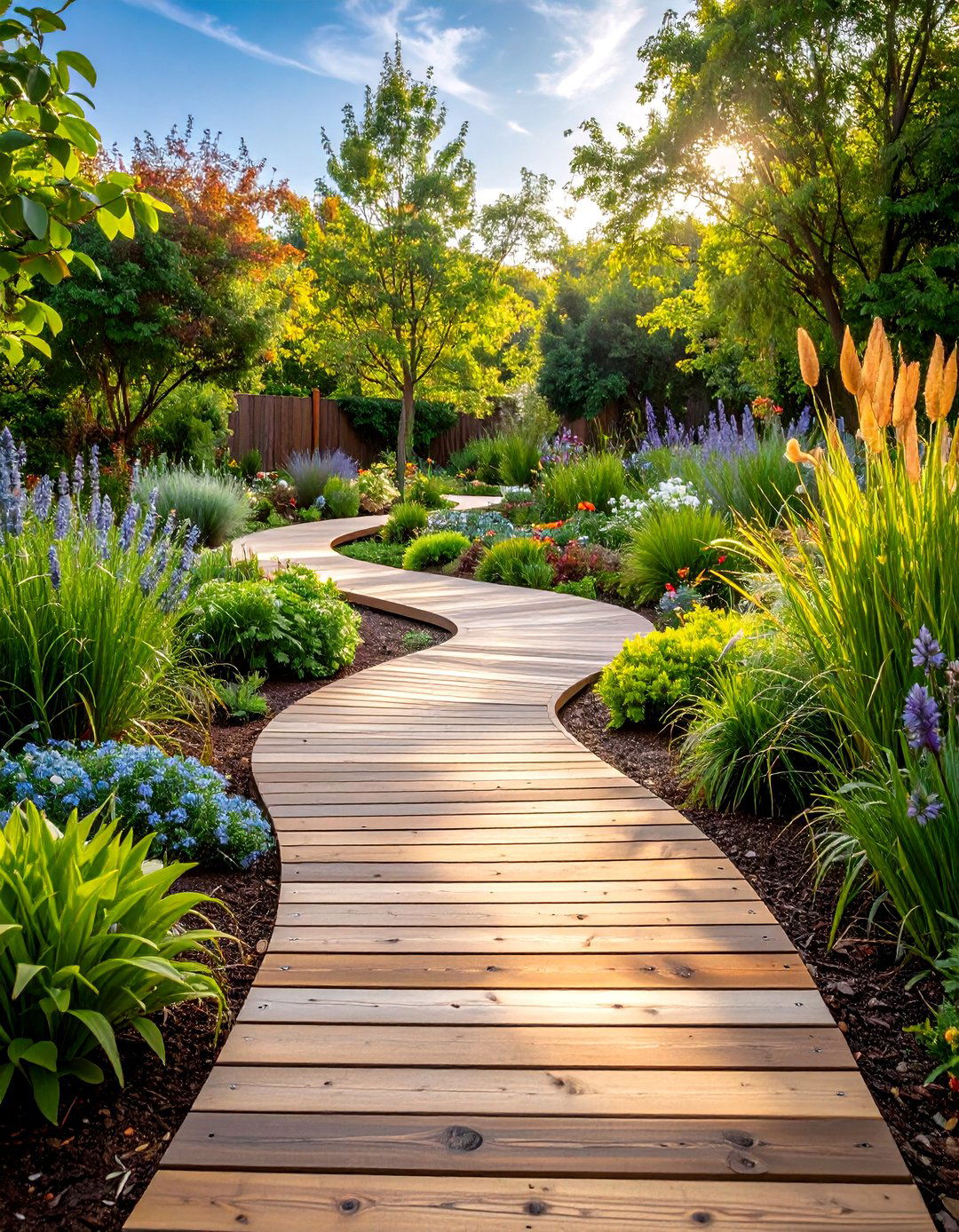
An eco-friendly composite path not only reduces environmental impact but also offers exceptional durability. These sustainable walkways utilize recycled plastic materials and sustainable manufacturing processes to minimize waste while providing weather-resistant surfaces. The environmental benefits extend beyond material sourcing, as composite walkways require minimal maintenance chemicals and treatments compared to traditional wood pathways. Many eco-friendly composite options incorporate recycled content from post-consumer plastics, giving new life to materials that would otherwise contribute to landfill waste. These pathways demonstrate environmental consciousness without compromising on aesthetic appeal or structural integrity, making them ideal for homeowners committed to sustainable living practices.
3. Textured Anti-Slip Composite Walkway Surface
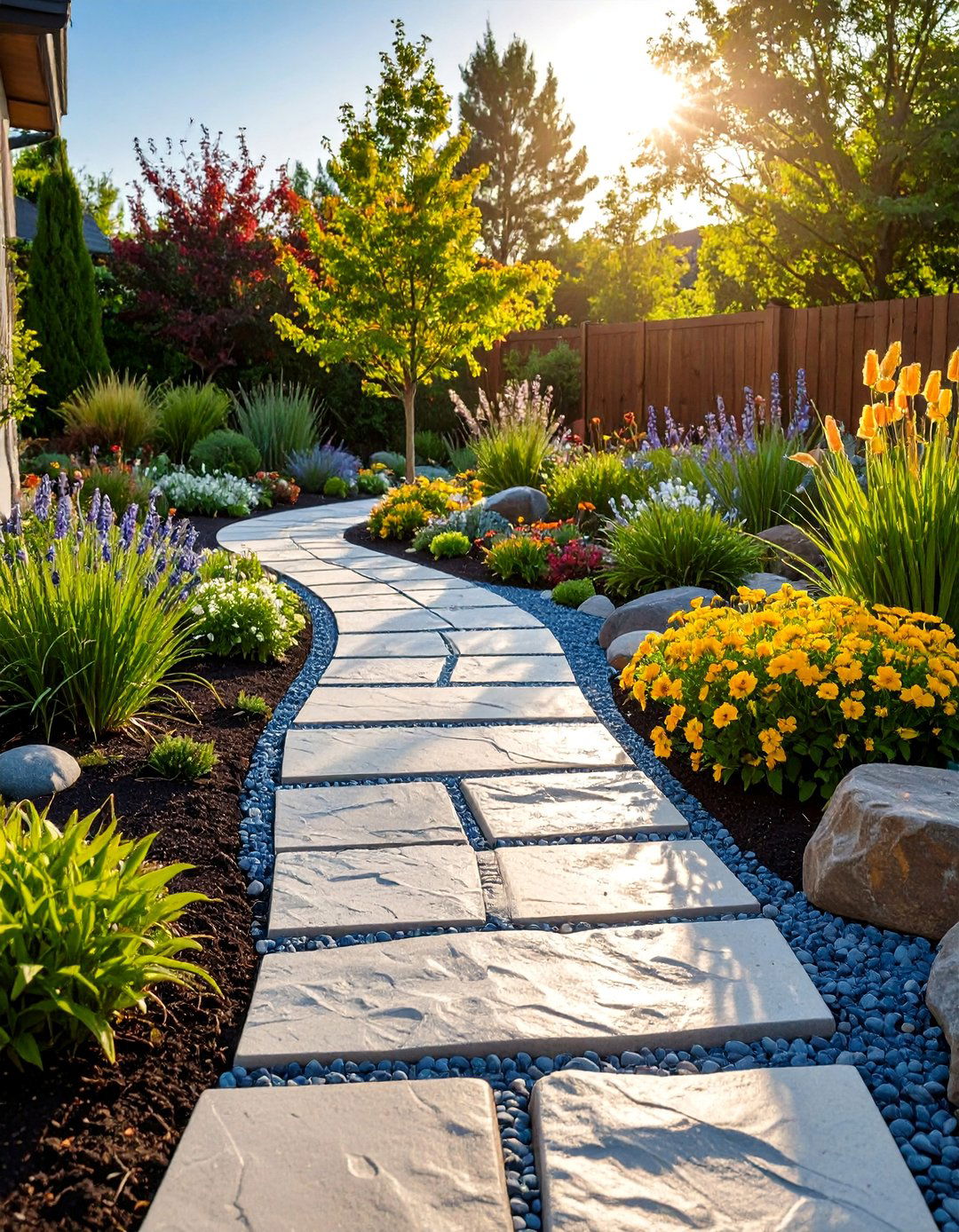
Composite walkways with textured surfaces offer enhanced grip and visual appeal, mimicking natural materials like stone or wood while providing a realistic look without the associated maintenance. The textured finish significantly reduces slip risks, making these pathways particularly valuable in areas prone to rain, frost, or high humidity. Advanced texturing techniques create depth and visual interest while maintaining the practical benefits of composite construction. These surfaces excel in pool areas, steep inclines, and high-traffic zones where safety remains paramount. The texture variations range from subtle wood grain patterns to more pronounced stone-like finishes, allowing customization to complement existing landscape elements while ensuring pedestrian safety throughout all weather conditions.
4. Multi-Toned Composite Walkway with Gradient Effects
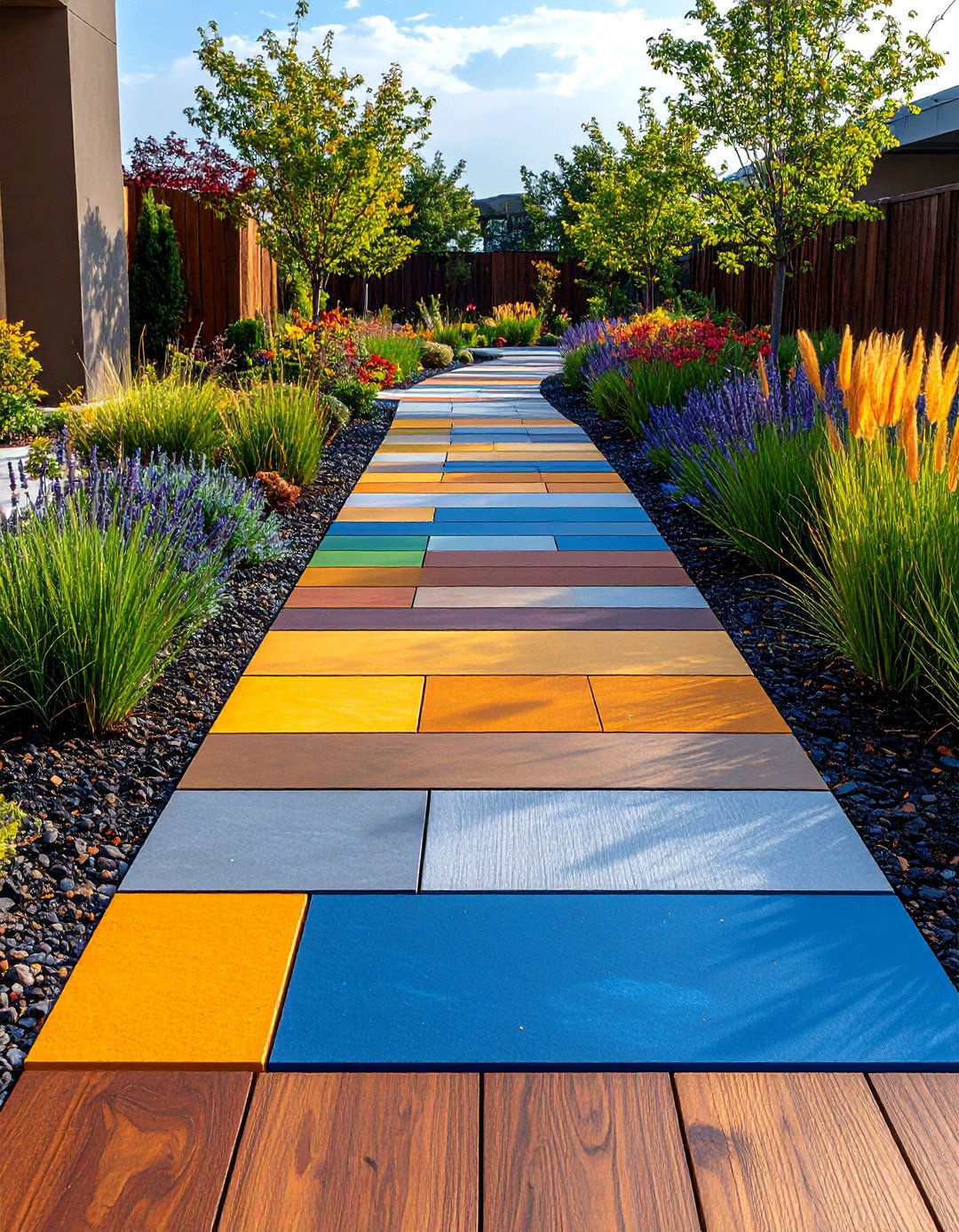
Multi-toned composite walkways bring depth and interest to outdoor spaces by combining complementary colors, whether using alternating planks or subtle gradient patterns. This sophisticated design approach creates visual complexity without overwhelming the surrounding landscape elements. The fade-resistant properties of quality composite materials ensure color variations remain distinct and vibrant over extended periods. Consider transitioning from lighter tones near entrances to darker shades in garden areas, or incorporate seasonal color schemes that complement changing foliage. The versatility of multi-toned designs allows for creative expression while maintaining the practical benefits of low-maintenance composite construction. These walkways serve as artistic focal points that enhance property value and aesthetic appeal.
5. Modern Minimalist Composite Walkway with Clean Lines
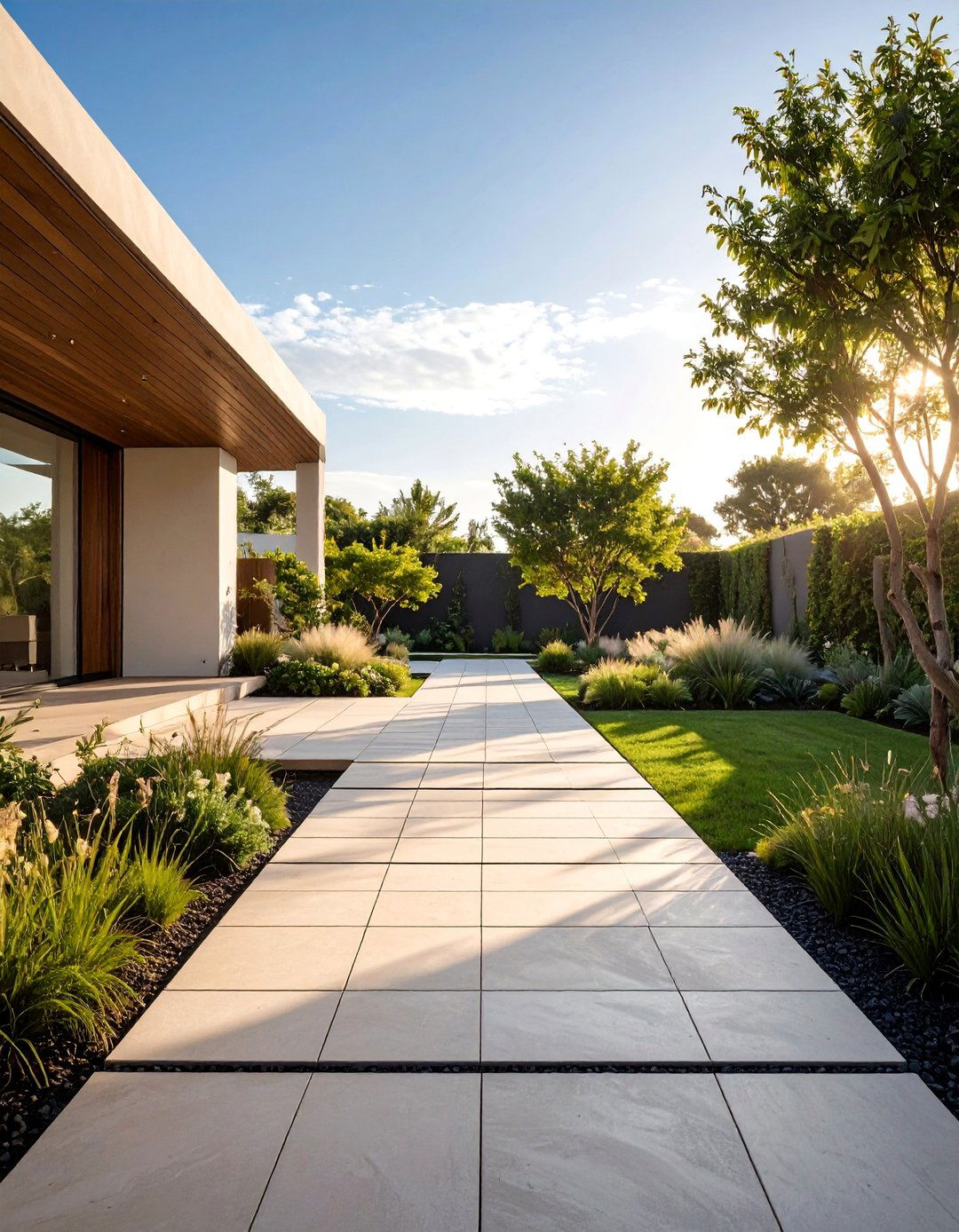
For fans of clean and understated designs, minimalist composite walkways with straight, linear patterns complement modern architecture while providing functional and low-maintenance solutions. The smooth, uniform finish resists stains and scratches, ensuring a pristine appearance for years without requiring regular maintenance treatments. These pathways feature clean geometric lines and neutral color palettes that enhance contemporary outdoor spaces without competing for visual attention. The minimalist approach emphasizes quality materials and precise installation techniques. Consider incorporating subtle lighting elements or contrasting border materials to define edges while maintaining the overall simplified aesthetic that characterizes modern landscape design.
6. Composite Walkway with Integrated LED Lighting System
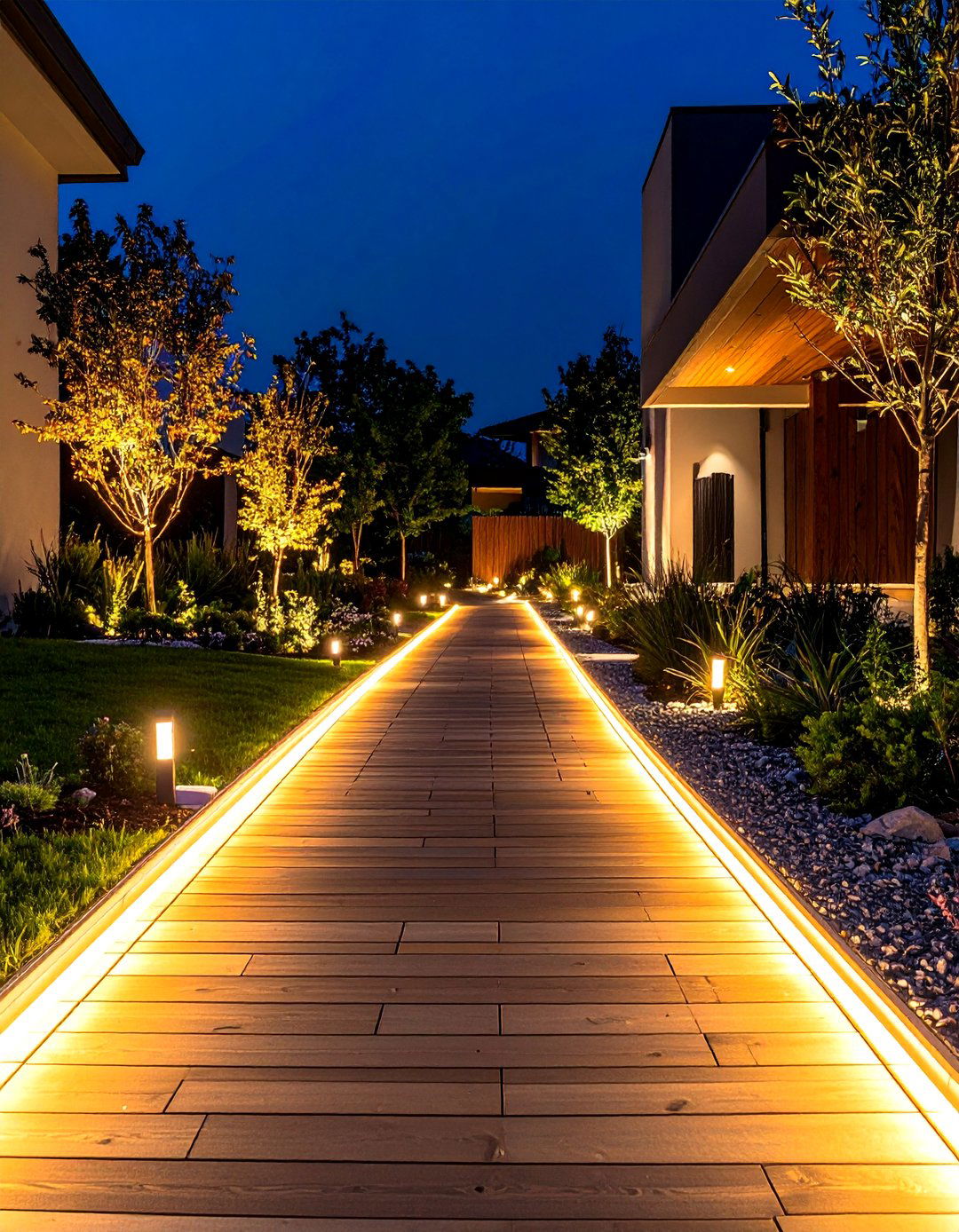
Composite walkways with integrated LED lighting elevate both safety and aesthetics in outdoor spaces by embedding lights along edges or under planks to create softly illuminated paths perfect for nighttime use. The embedded LED lighting produces a warm glow that highlights the pathway and adds stylish flair while remaining energy-efficient and weather-resistant. These sophisticated lighting systems enhance visibility during evening hours while creating enchanting atmospheric effects for outdoor entertaining. The integration process involves careful planning during installation to ensure proper electrical connections and weatherproofing. Consider programmable lighting systems that adjust brightness levels automatically or incorporate color-changing capabilities for special occasions and seasonal celebrations.
7. Curved Composite Walkway Following Natural Contours
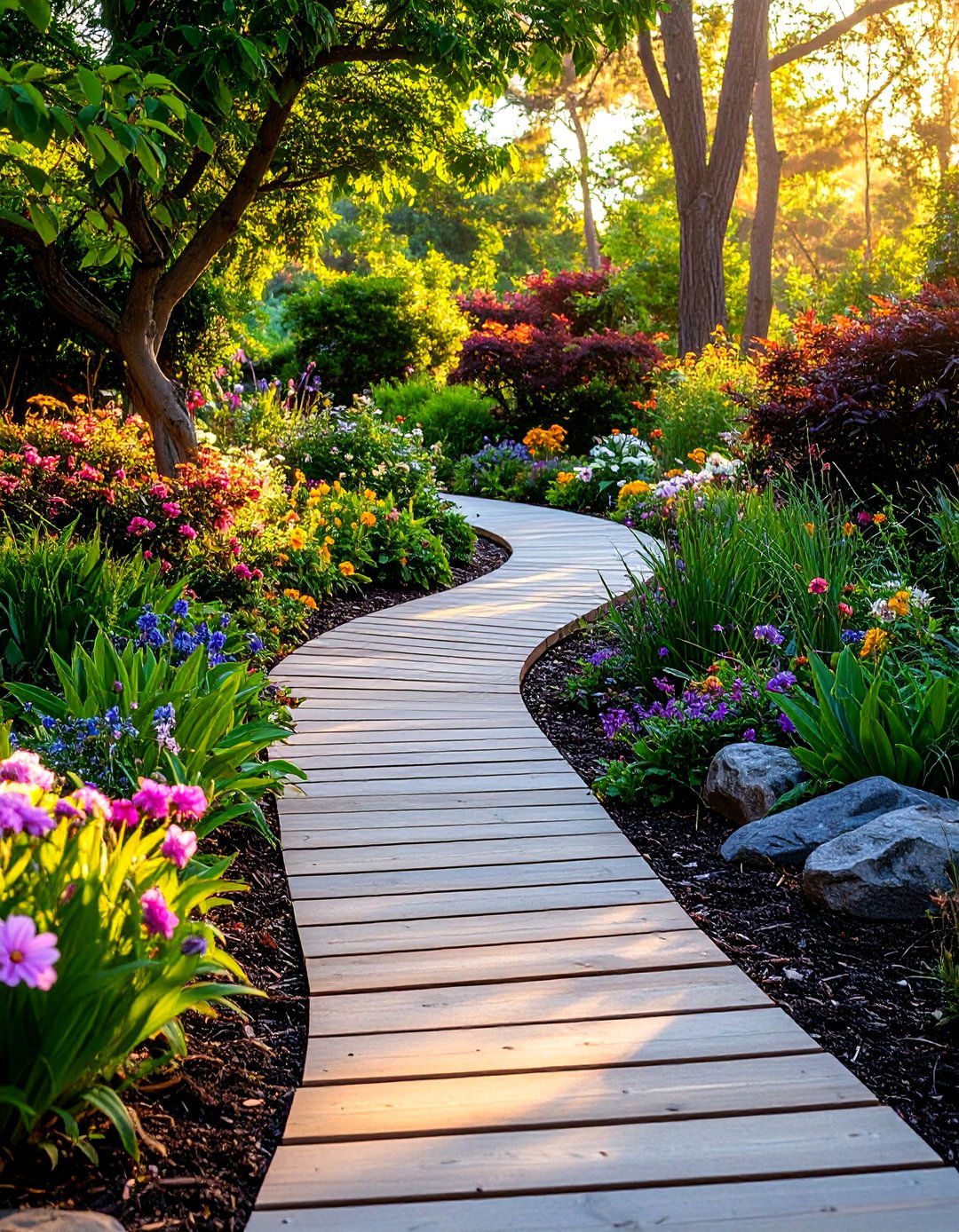
Curved composite pathways meandering through gardens create a sense of movement and elegance by following the natural contours of landscaping to enhance organic beauty of outdoor spaces. The flexibility of composite materials allows for smooth curves without cracking or breaking, making them perfect for custom designs that flow naturally through existing landscape features. These graceful pathways encourage leisurely strolls while creating visual interest through changing perspectives and view points. The curved design helps integrate hardscape elements with surrounding plantings, creating seamless transitions between constructed and natural areas. Consider varying the curve radius to create dynamic visual rhythm while maintaining comfortable walking surfaces throughout the pathway's length.
8. Elevated Composite Boardwalk Walkway Design
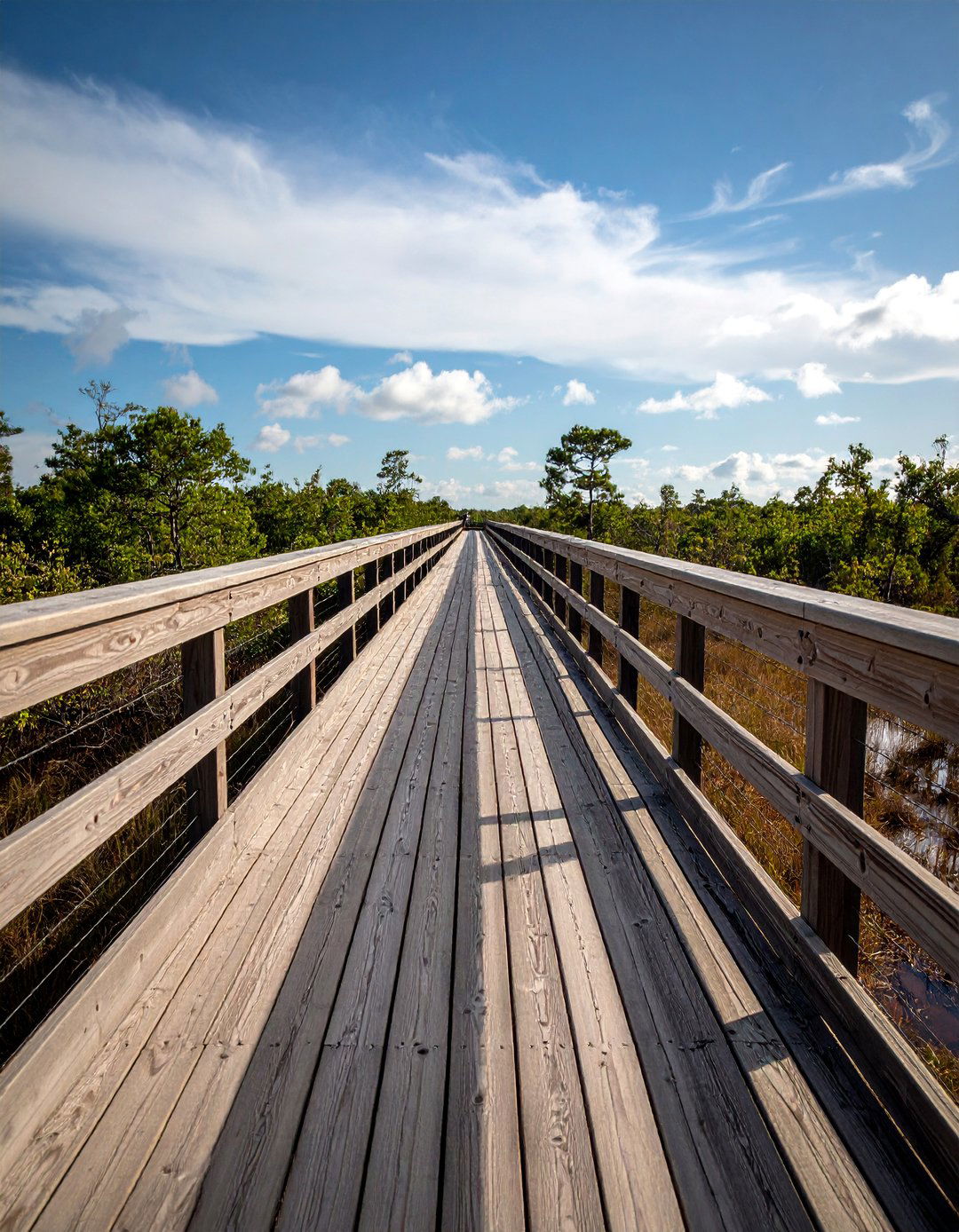
For areas prone to waterlogging or uneven terrain, elevated composite boardwalk paths offer both style and practicality by providing dry, stable surfaces while adding unique architectural elements to landscapes. The moisture-resistant properties of composite materials ensure these elevated structures won't warp or rot over time, even in challenging environments. These walkways excel in wetland areas, sloped terrain, and locations where ground-level installation isn't practical. The elevated design creates interesting sight lines and viewing opportunities while protecting sensitive ground areas beneath. Consider incorporating railings or decorative elements that complement the overall design theme while ensuring safety and accessibility for all users.
9. Stone-Look Composite Walkway with Natural Appearance
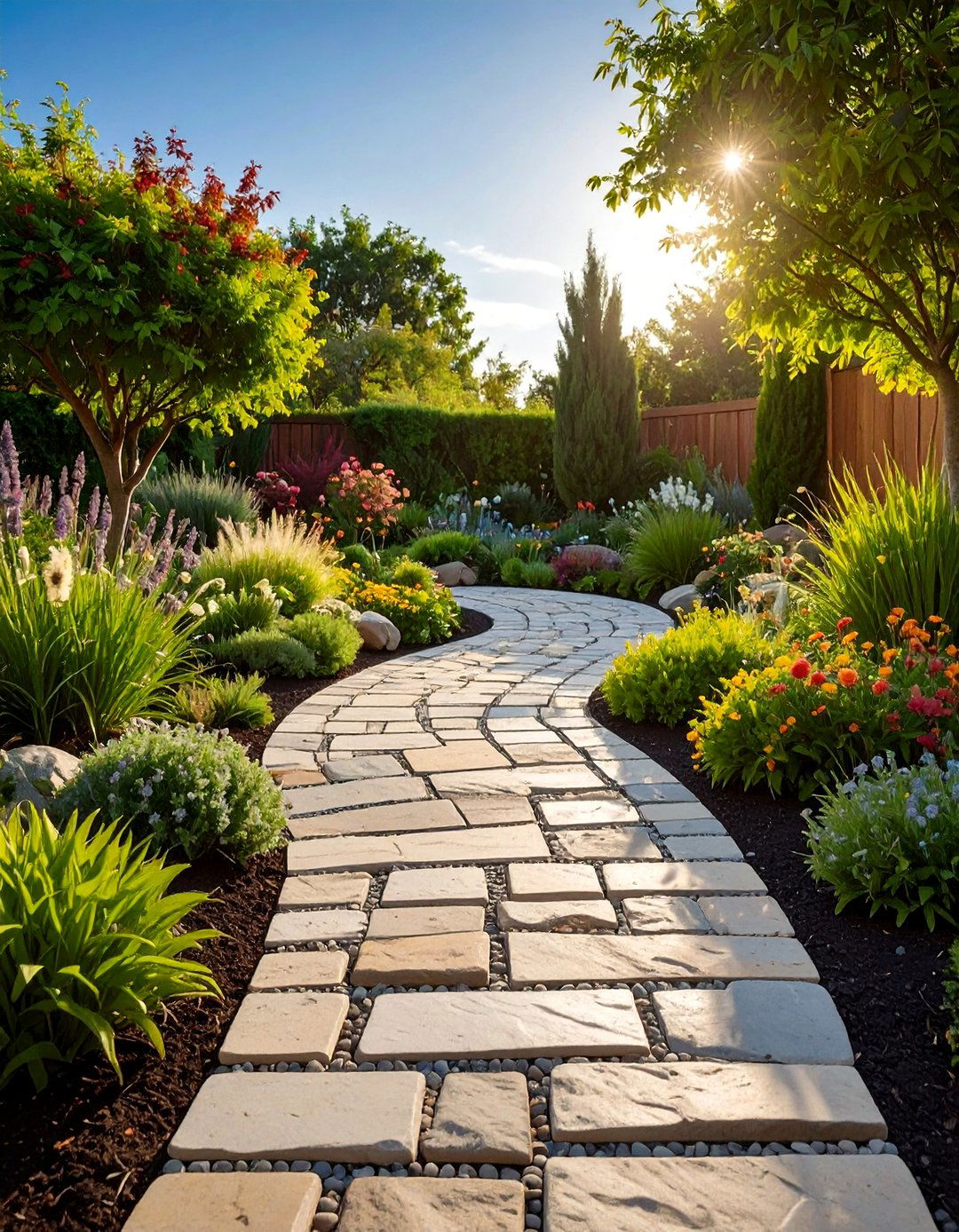
Stone-look composite walkways combine the natural beauty of stone with the convenience of modern materials, mimicking texture and appearance of real stone while being lighter, easier to install, and more affordable. These pathways resist cracking and weathering while providing timeless aesthetic appeal that pairs beautifully with various landscaping styles. The manufacturing process creates realistic stone textures and color variations that closely resemble natural materials without the associated weight and installation challenges. These walkways work exceptionally well in traditional garden settings, heritage properties, and landscapes where natural materials are preferred. The composite construction eliminates concerns about freeze-thaw damage and settling that commonly affect natural stone installations.
10. Herringbone Pattern Composite Walkway Installation
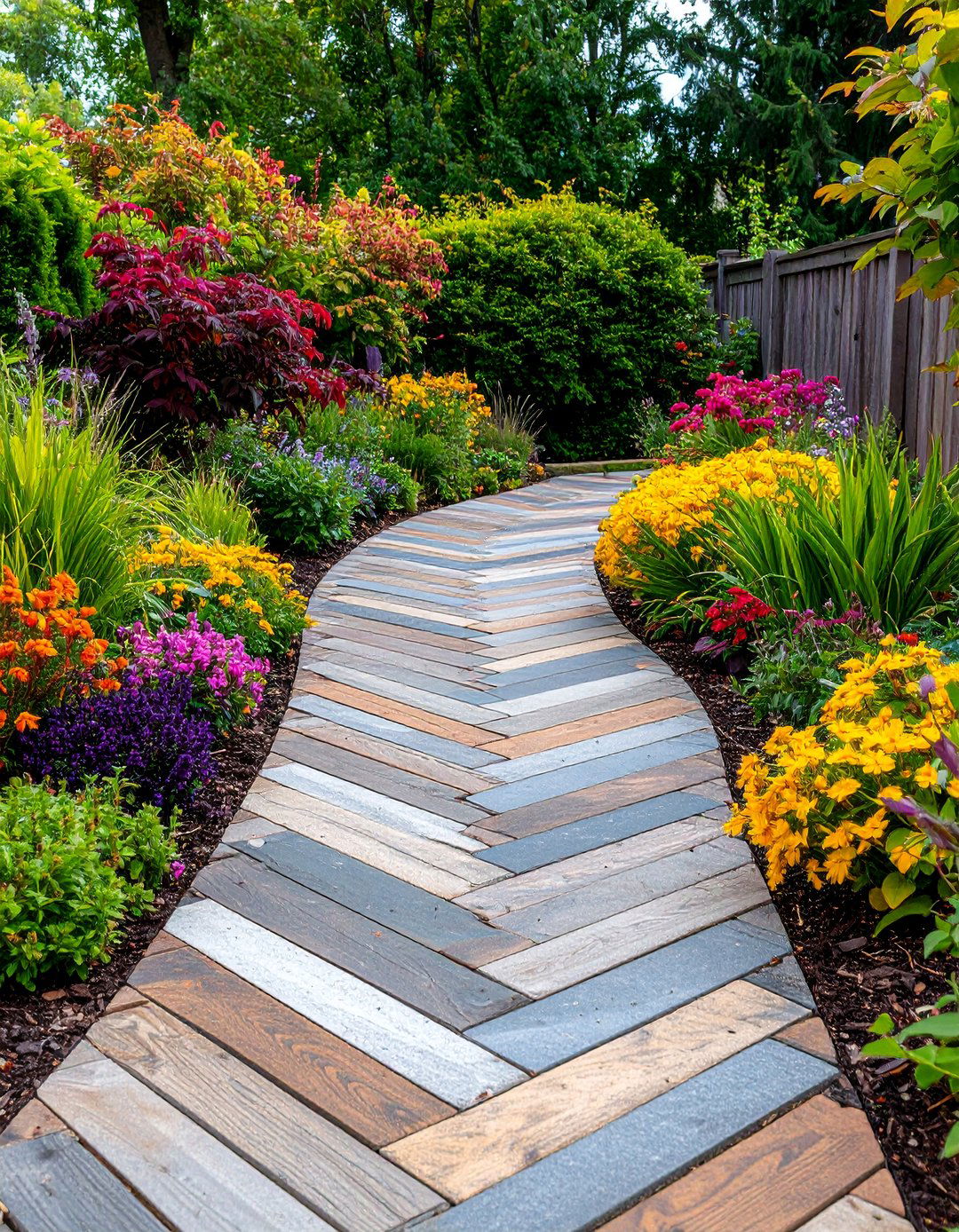
The herringbone pattern arranged in a zig-zag style creates visually striking effects while providing superior interlocking strength, making it ideal for high-traffic areas. This classic pattern adds sophisticated visual texture to composite walkways while enhancing structural stability through the interlocking design. The angular arrangement creates dynamic visual interest that draws the eye along the pathway's length. Modern composite materials allow for precise cutting and fitting required for professional herringbone installation. Consider alternating colors or textures within the herringbone pattern to create additional visual complexity. The pattern works equally well in formal and informal landscape settings, providing versatility for various design themes and architectural styles.
11. Coastal-Inspired Composite Walkway with Maritime Colors
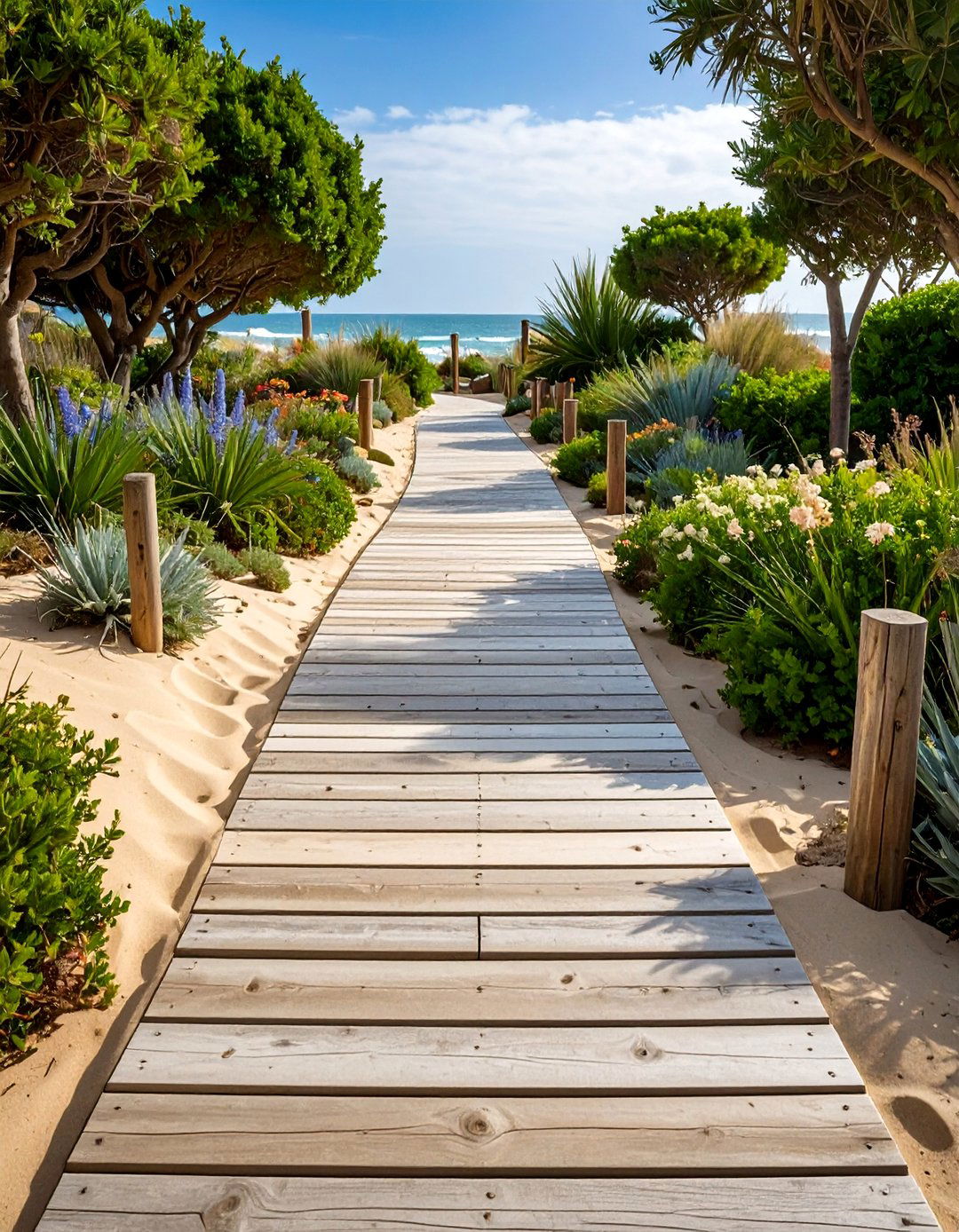
Coastal-inspired composite walkways bring the breezy charm of seaside living to outdoor spaces with colors like sandy beige, driftwood gray, or ocean blue that evoke the serenity of beachside retreats. These pathways incorporate weathered textures and natural color palettes that complement coastal landscape themes. The salt-resistant properties of quality composite materials make these walkways particularly suitable for actual coastal locations where traditional materials might deteriorate rapidly. Consider incorporating decorative elements like rope details or nautical hardware to enhance the maritime theme. The relaxed aesthetic works well in both formal and informal garden settings, creating peaceful retreat atmospheres regardless of actual proximity to water features.
12. Composite Walkway with Built-In Planter Integration
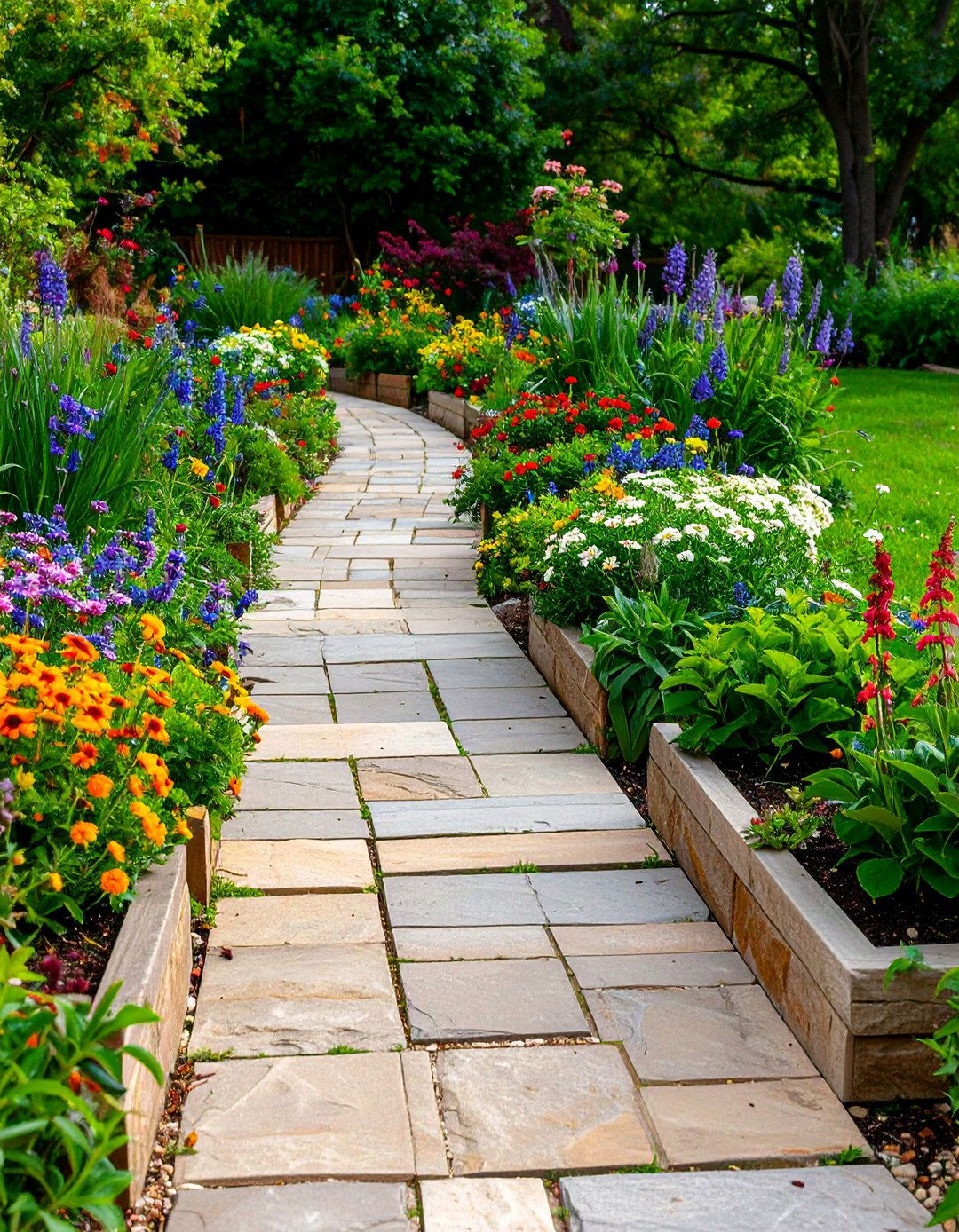
A rustic composite walkway intertwines the charm of nature with innovative design by integrating built-in planters that weave together warm composite materials and earthy textures to create pathways that naturally merge with garden landscapes. This multi-functional approach maximizes space utilization while creating cohesive design integration between hardscape and landscape elements. The planters can accommodate seasonal flowers, herbs, or decorative grasses that complement the pathway's overall design theme. Consider incorporating irrigation systems within the planter design for convenient maintenance. The combination of durable walkway surfaces with integrated growing spaces creates dynamic landscape features that evolve seasonally while maintaining structural integrity throughout changing weather conditions.
13. Geometric Patterned Composite Walkway with Bold Shapes

A dynamic composite walkway featuring contemporary geometric patterns adds a modern twist to traditional outdoor design, utilizing bold shapes and clean lines that command attention while delivering superior durability. These sophisticated patterns create visual focal points that enhance modern landscape designs through mathematical precision and artistic expression. The geometric approach works particularly well in contemporary residential settings and commercial landscapes where bold design statements are desired. Consider incorporating contrasting colors or textures within the geometric framework to emphasize pattern definition. The precision required for geometric patterns showcases the versatility and workability of modern composite materials while creating striking visual effects that complement architectural elements.
14. Dual-Toned Composite Walkway with Contrasting Elements
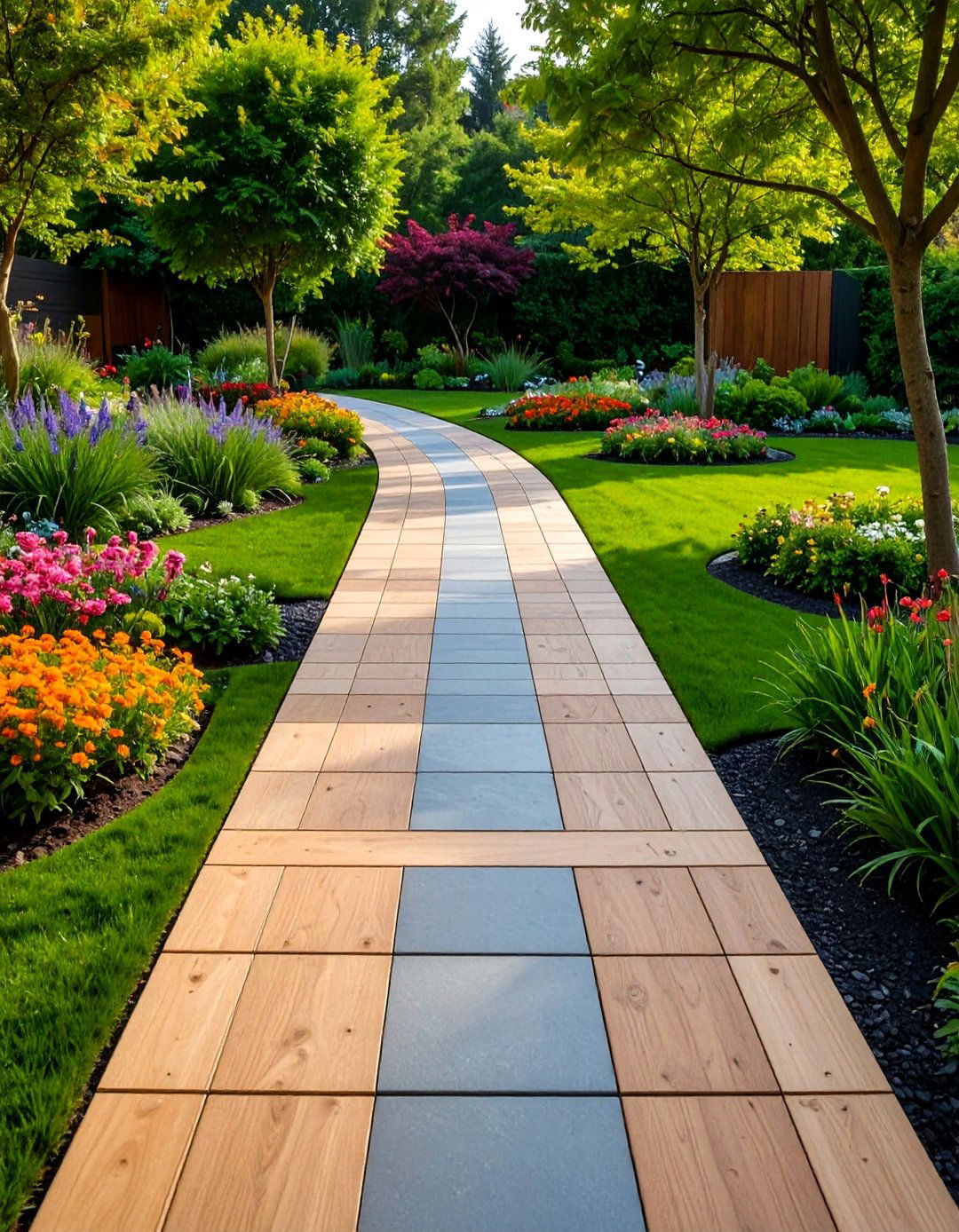
A dual-toned composite walkway provides visual contrast and depth through strategic use of two complementary hues, enhancing spatial perception while creating dynamic, eye-catching patterns. This design approach utilizes color theory principles to create sophisticated visual effects that guide pedestrian movement while adding artistic interest to outdoor spaces. The contrasting elements can highlight specific pathway sections, create directional indicators, or establish visual rhythm through repetitive patterns. Consider using lighter tones for wider sections and darker accents for borders or detail areas. The durability of composite materials ensures color contrasts remain distinct and vibrant despite prolonged exposure to ultraviolet radiation and weather elements.
15. Bridge-Style Composite Walkway for Dramatic Effect
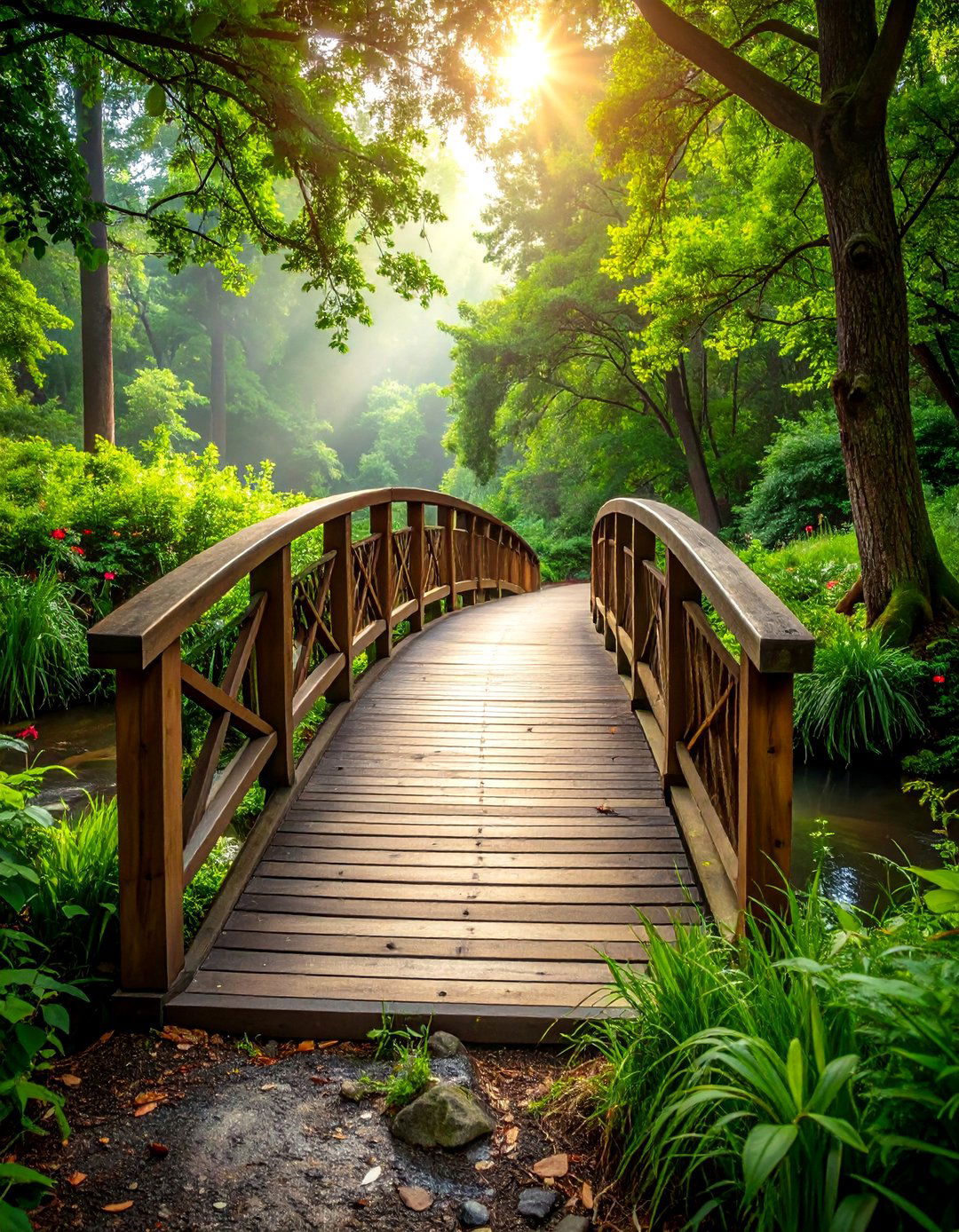
Bridge-style composite walkways create dramatic focal points in gardens or yards by spanning over water features, small creeks, or uneven terrain while adding sophistication and functionality. The lightweight yet sturdy properties of composite materials make them ideal for constructing bridges that resist moisture and pests while ensuring longevity. These elevated structures provide unique viewing perspectives and create interesting architectural elements within landscape designs. Consider incorporating decorative railings or lighting elements that enhance the bridge's visual impact while ensuring safety. The bridge design allows for creative span configurations that can accommodate various landscape challenges while creating memorable passage experiences that enhance property value and aesthetic appeal.
16. Composite Walkway with Integrated Seating Areas
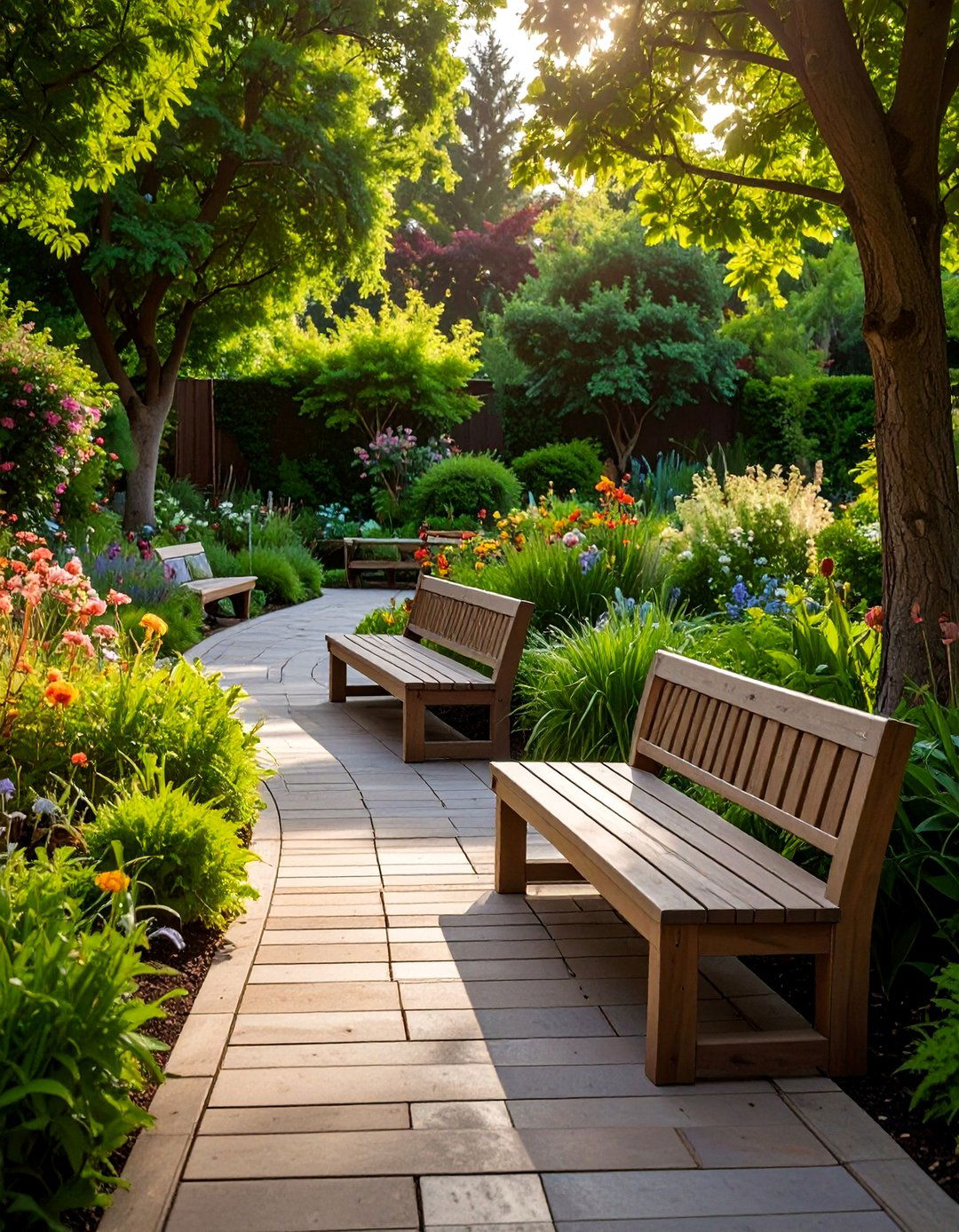
Integrated seating in composite walkways provides not only pathways but also outdoor resting spots, seamlessly incorporating benches or built-in seating along walkway edges to encourage relaxation and social interaction. This multi-functional approach maximizes space utilization while creating comfortable gathering areas within the landscape design. The seating elements can be constructed from matching composite materials to maintain design continuity, or contrasting materials can be used to create visual interest. Consider positioning seating areas to take advantage of scenic views, garden focal points, or comfortable microclimates. The integrated approach eliminates the need for separate furniture placement while creating permanent amenities that enhance outdoor living experiences.
17. Rustic Wood-Look Composite Walkway Design
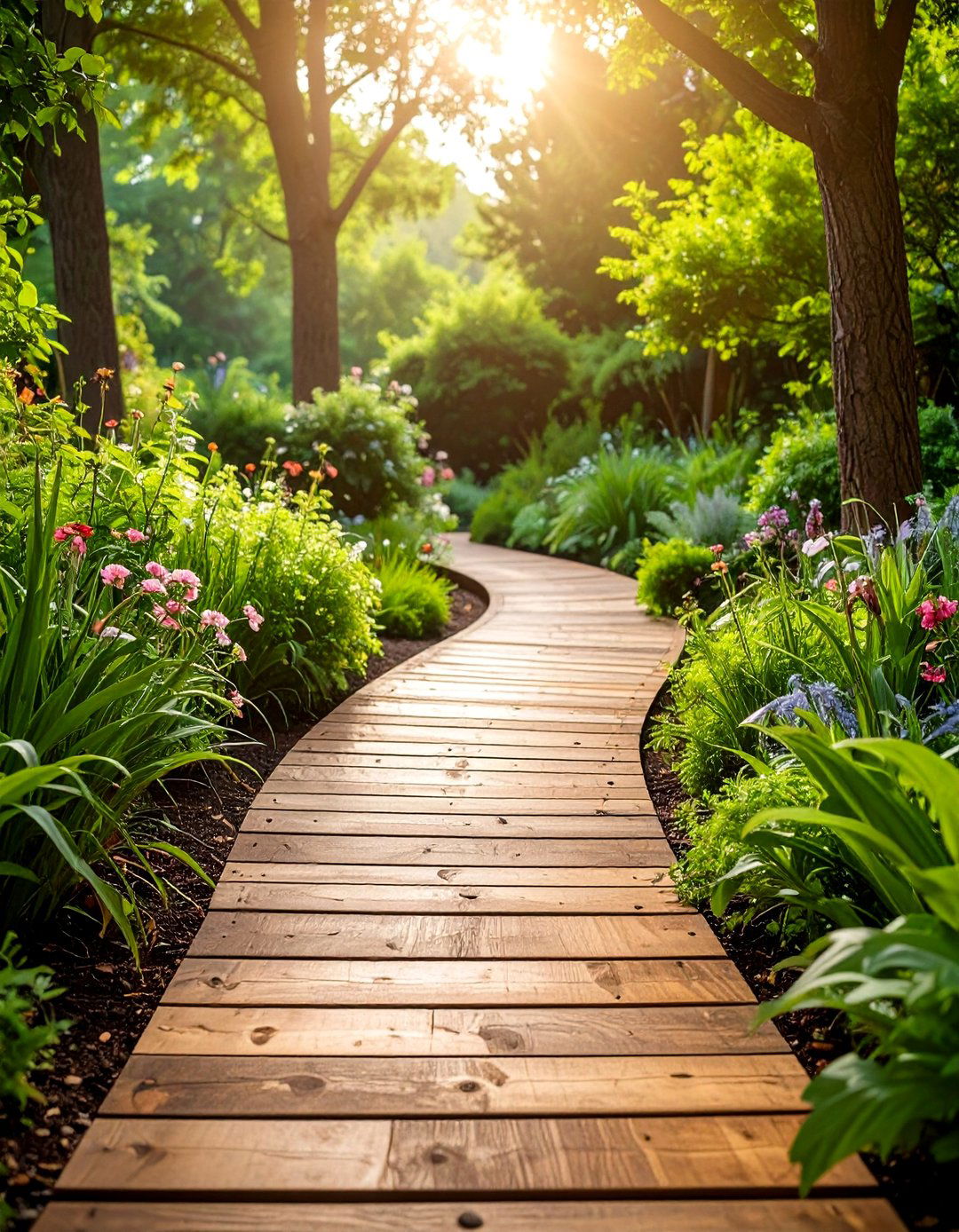
Wood-mimicking composite materials deliver the warm, rustic appearance of natural wood without the risk of rotting, warping, or splintering, with natural textures and earthy tones that blend seamlessly with garden landscapes. These eco-friendly alternatives require no chemical treatments while providing authentic wood appearance through advanced manufacturing techniques. The rustic aesthetic complements natural garden settings, countryside properties, and informal landscape designs where traditional materials are preferred. Consider varying plank widths or incorporating weathered finishes to enhance the authentic wood appearance. The composite construction eliminates maintenance concerns associated with natural wood while providing consistent performance in various weather conditions.
18. Contemporary Composite Walkway with Smooth Surfaces
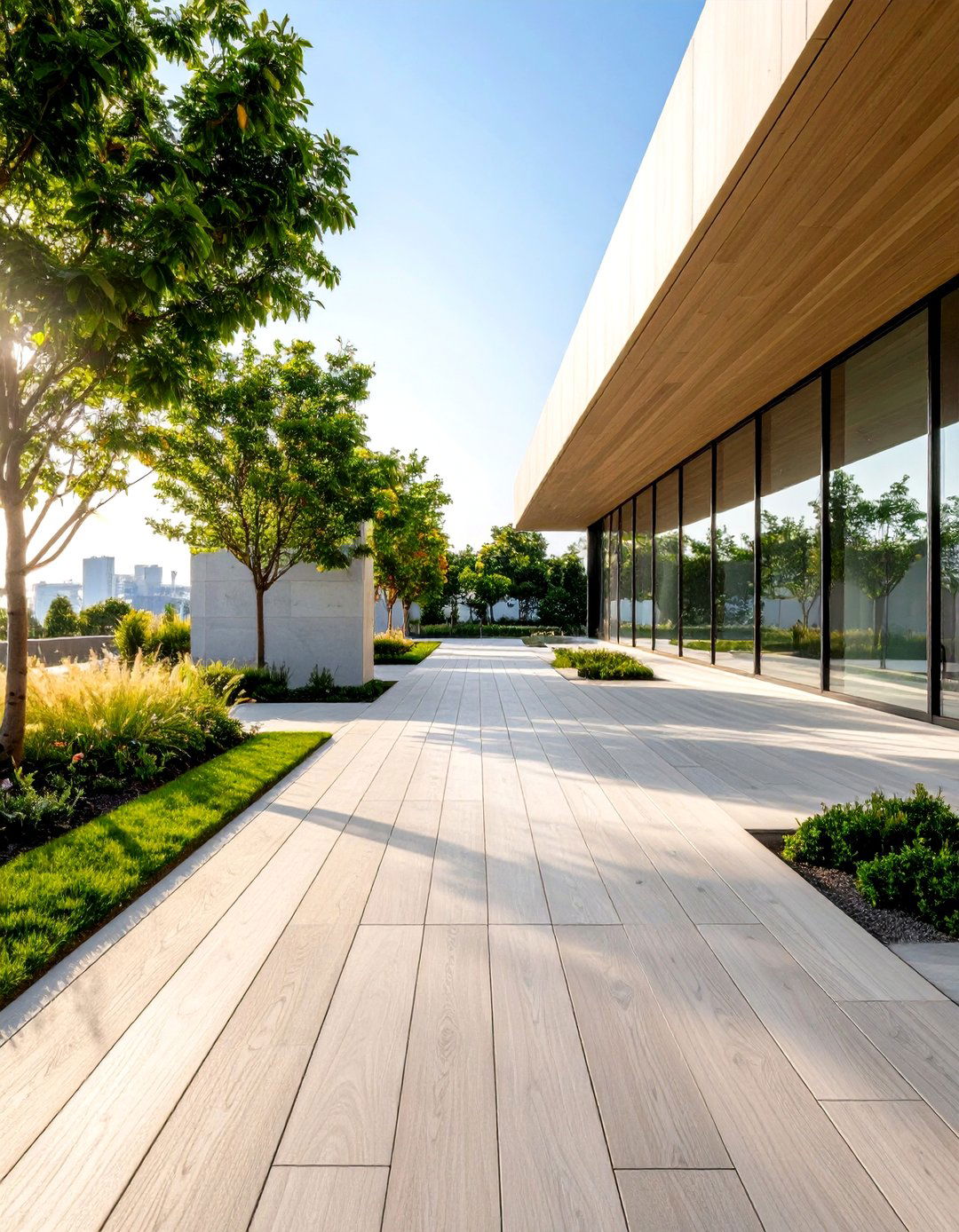
The contemporary composite walkway emphasizes sleek, smooth surfaces that create sophisticated pathways perfect for modern architectural settings. These designs feature uniform textures and clean lines that complement minimalist landscape approaches while providing durable, low-maintenance surfaces. The smooth finish reflects light beautifully, creating subtle visual interest through changing light conditions throughout the day. Quality composite materials resist staining and scratching, maintaining their pristine appearance with minimal cleaning requirements. Consider incorporating subtle color variations or strategic lighting to enhance the contemporary aesthetic. The refined appearance works exceptionally well in urban settings, modern residential developments, and commercial properties where sophisticated design elements are valued.
19. Multi-Level Composite Walkway with Tiered Design
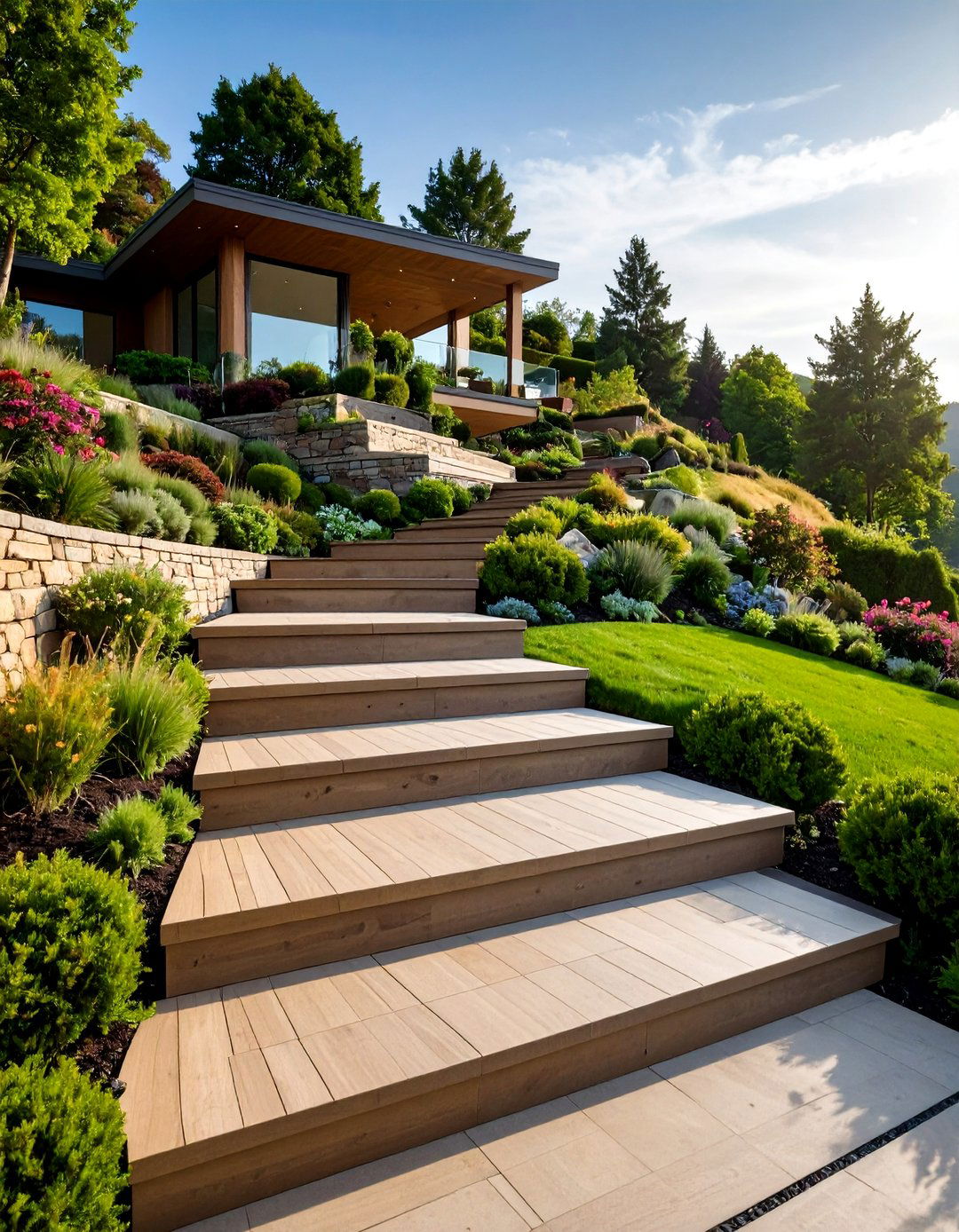
For complex terrain or dramatic landscape features, multi-level composite walkways create stunning tiered designs that accommodate elevation changes while providing safe, accessible passage. The lightweight properties of composite materials simplify construction of multi-level structures while ensuring long-term stability and weather resistance. These sophisticated designs can incorporate landing areas, directional changes, and viewing platforms that enhance the overall walking experience. Consider integrating handrails, lighting, and landscape elements that complement the tiered structure while ensuring safety and accessibility. The multi-level approach allows for creative architectural expression while solving practical challenges posed by sloped or uneven terrain conditions.
20. Weather-Resistant Composite Walkway for All Climates
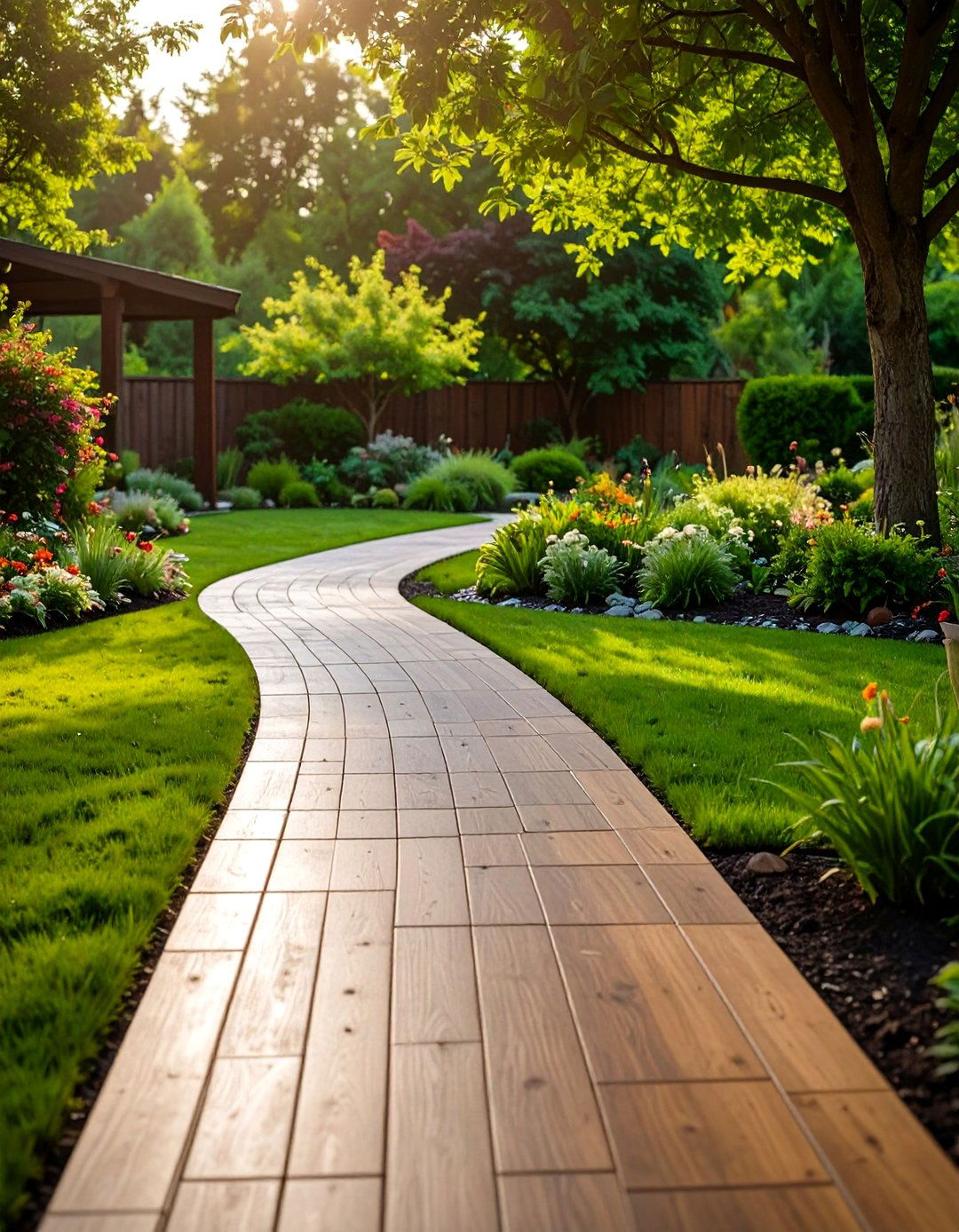
Weather-resistant composite walkways provide excellent durability without concern for rotting, splintering, or termite damage, though they maintain stability better than traditional materials in varying climate conditions. These pathways incorporate advanced composite technologies that withstand extreme temperature variations, moisture exposure, and ultraviolet radiation without significant deterioration. The weather-resistant properties make these walkways particularly valuable in regions with harsh climate conditions where traditional materials might require frequent replacement or repair. Consider selecting composite materials specifically rated for local climate conditions to ensure optimal performance. The long-term durability reduces maintenance costs while providing consistent aesthetic appeal regardless of seasonal weather challenges.
Conclusion:
Composite walkways offer exceptional versatility for creating beautiful, durable outdoor pathways that enhance both functionality and aesthetic appeal. From colorful patterned designs to sophisticated lighting integration, these innovative materials provide solutions for every landscape challenge. Their superior corrosion resistance and lightweight properties make them ideal alternatives to traditional materials, while advanced manufacturing techniques deliver authentic natural appearances without associated maintenance concerns. Whether you choose minimalist contemporary designs or rustic wood-look styles, composite walkways represent smart investments that provide long-lasting value for modern outdoor living spaces.


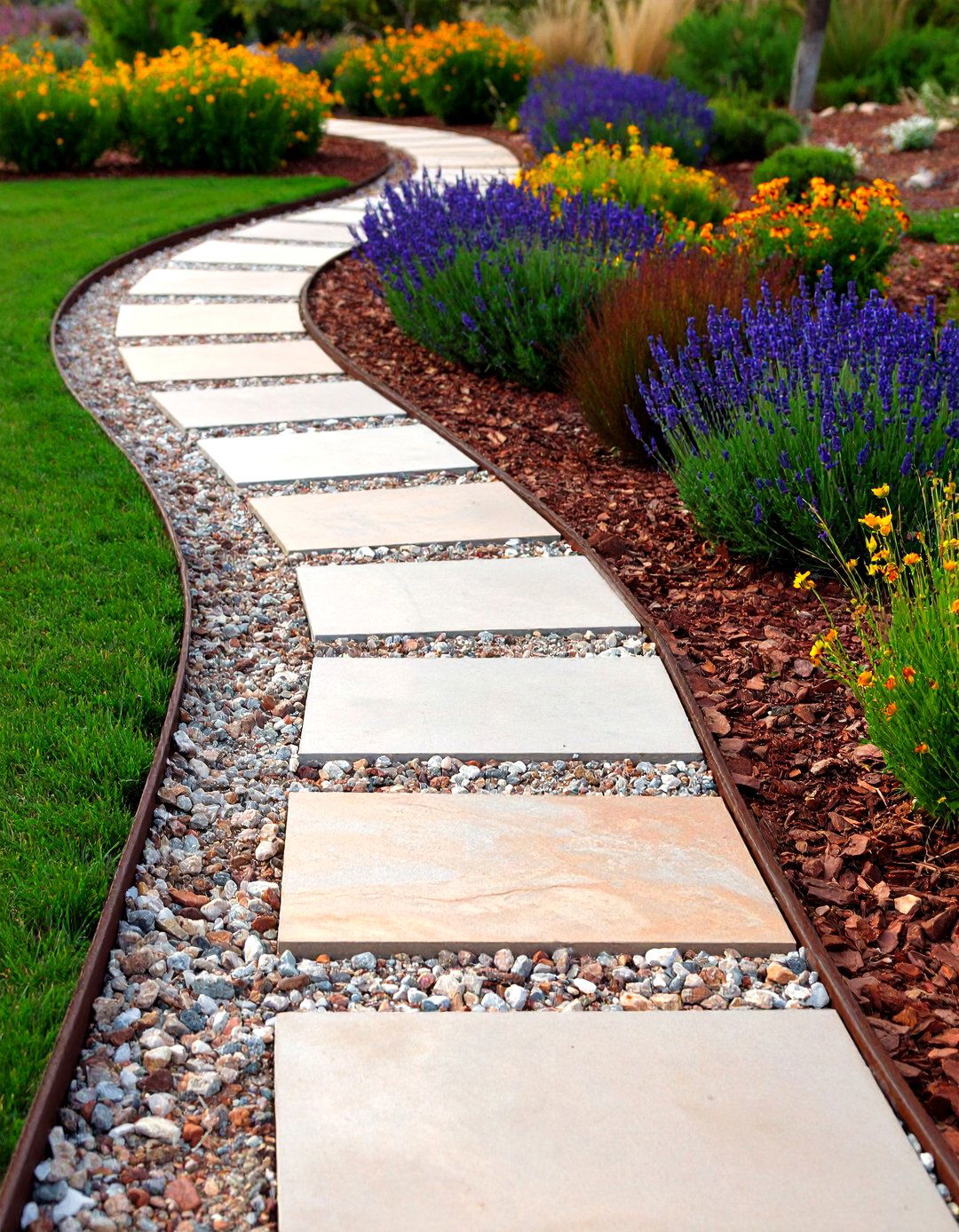
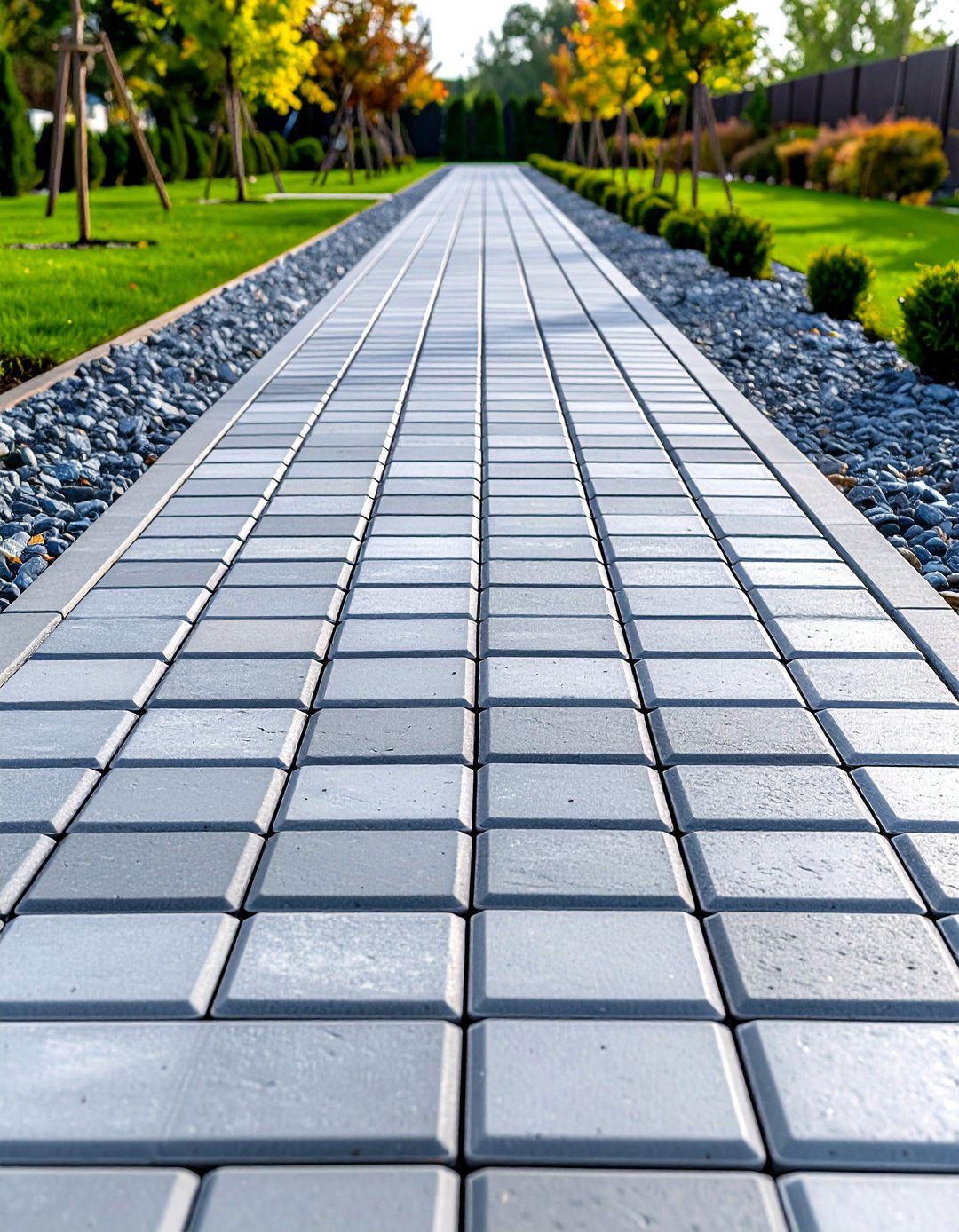

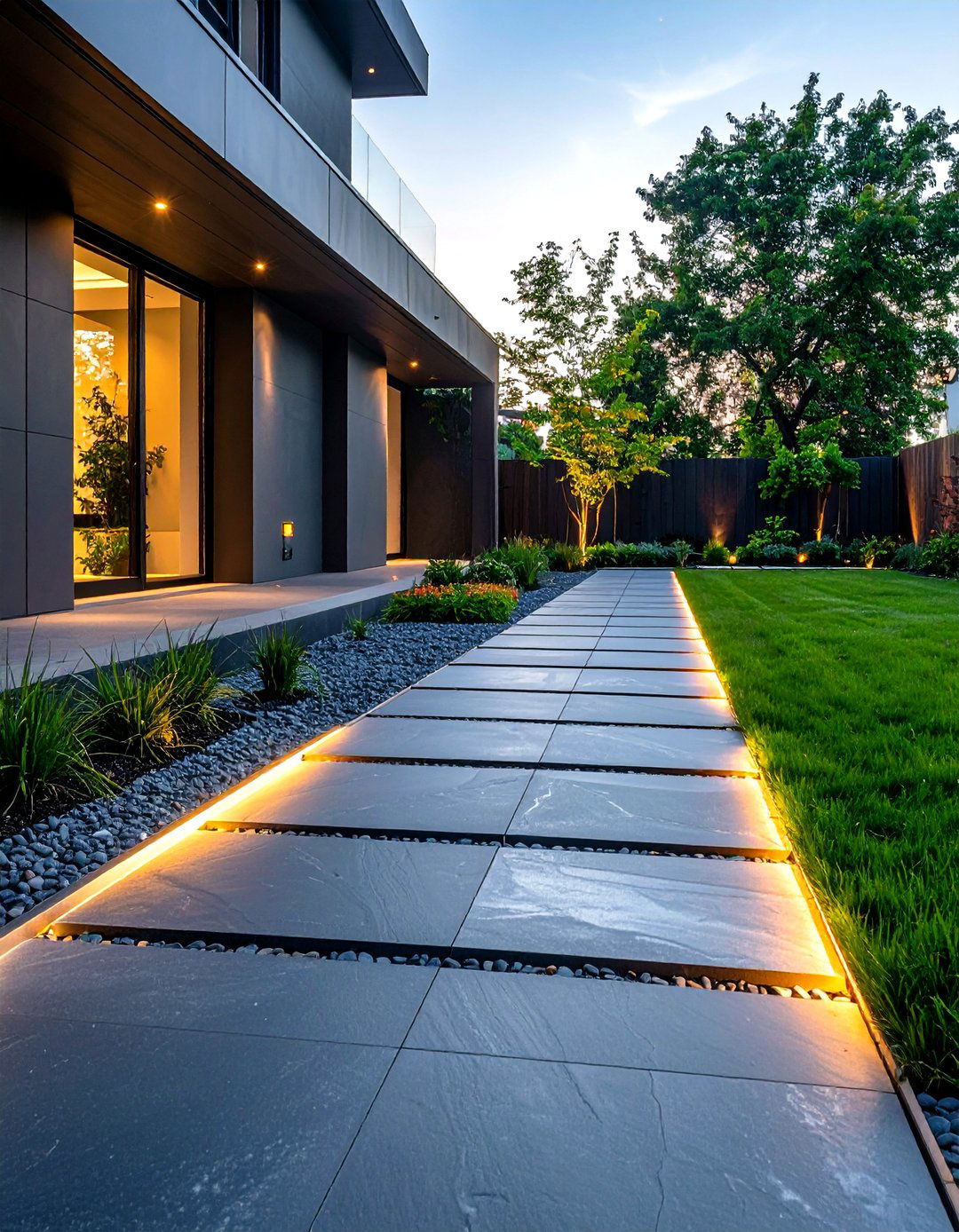
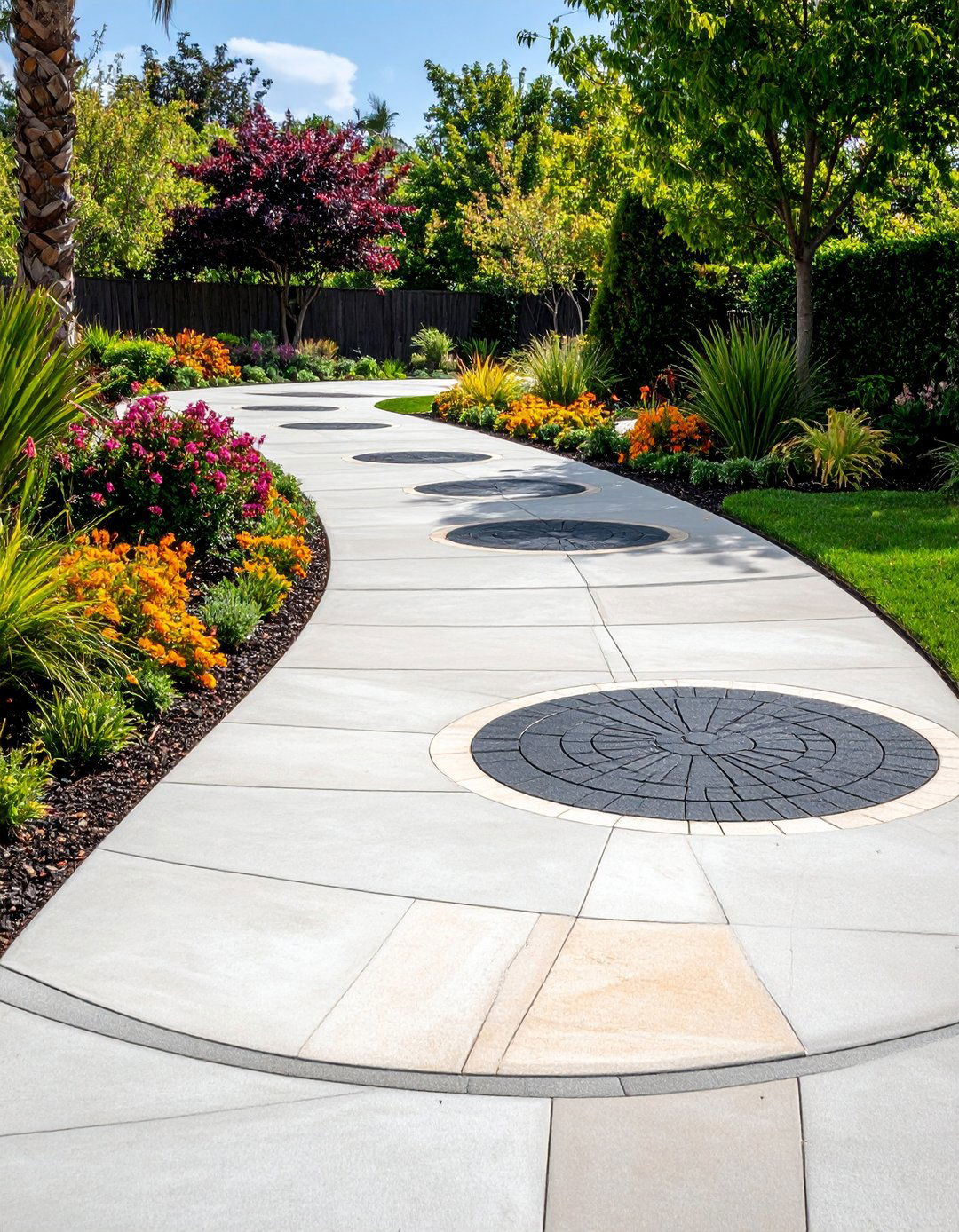
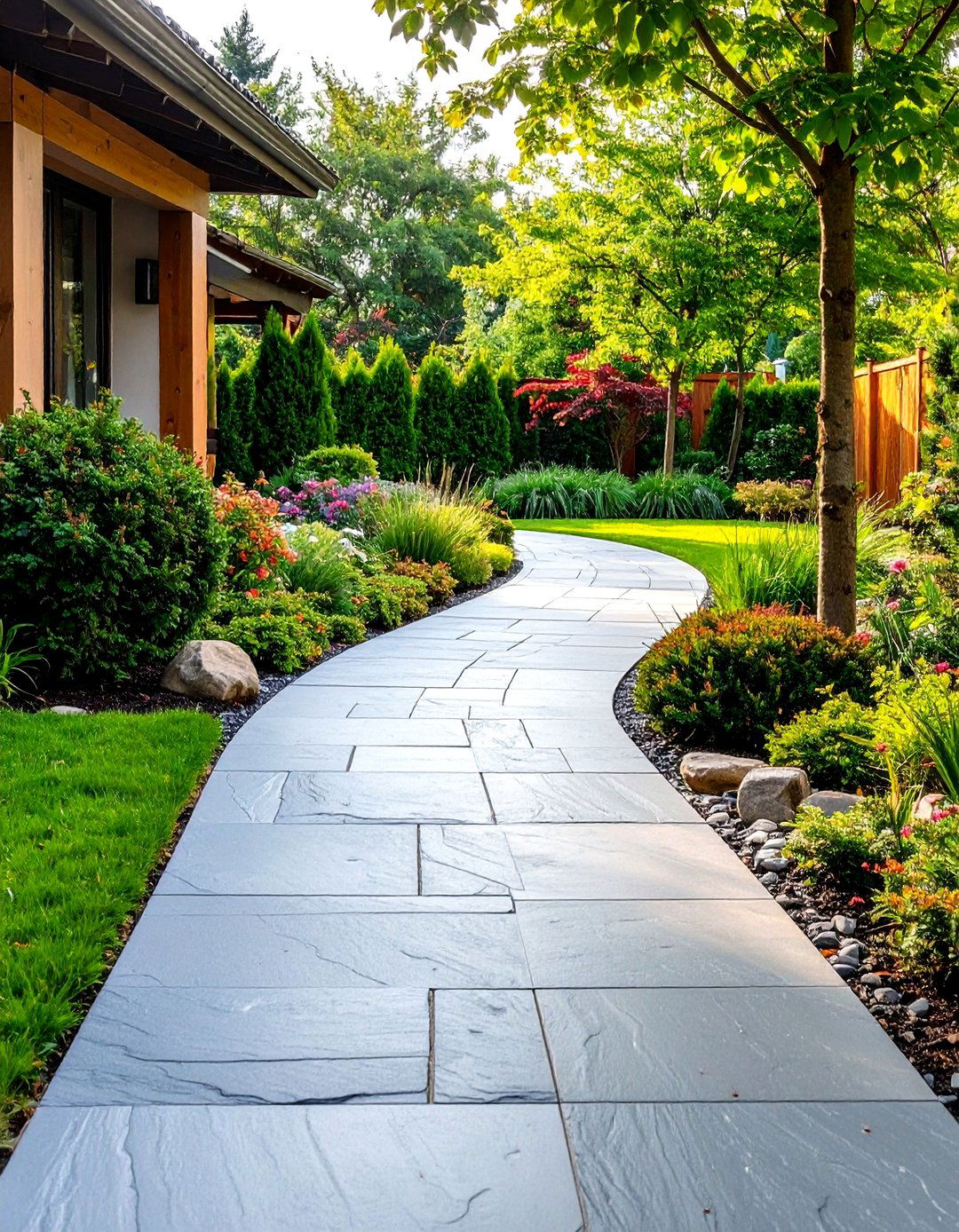
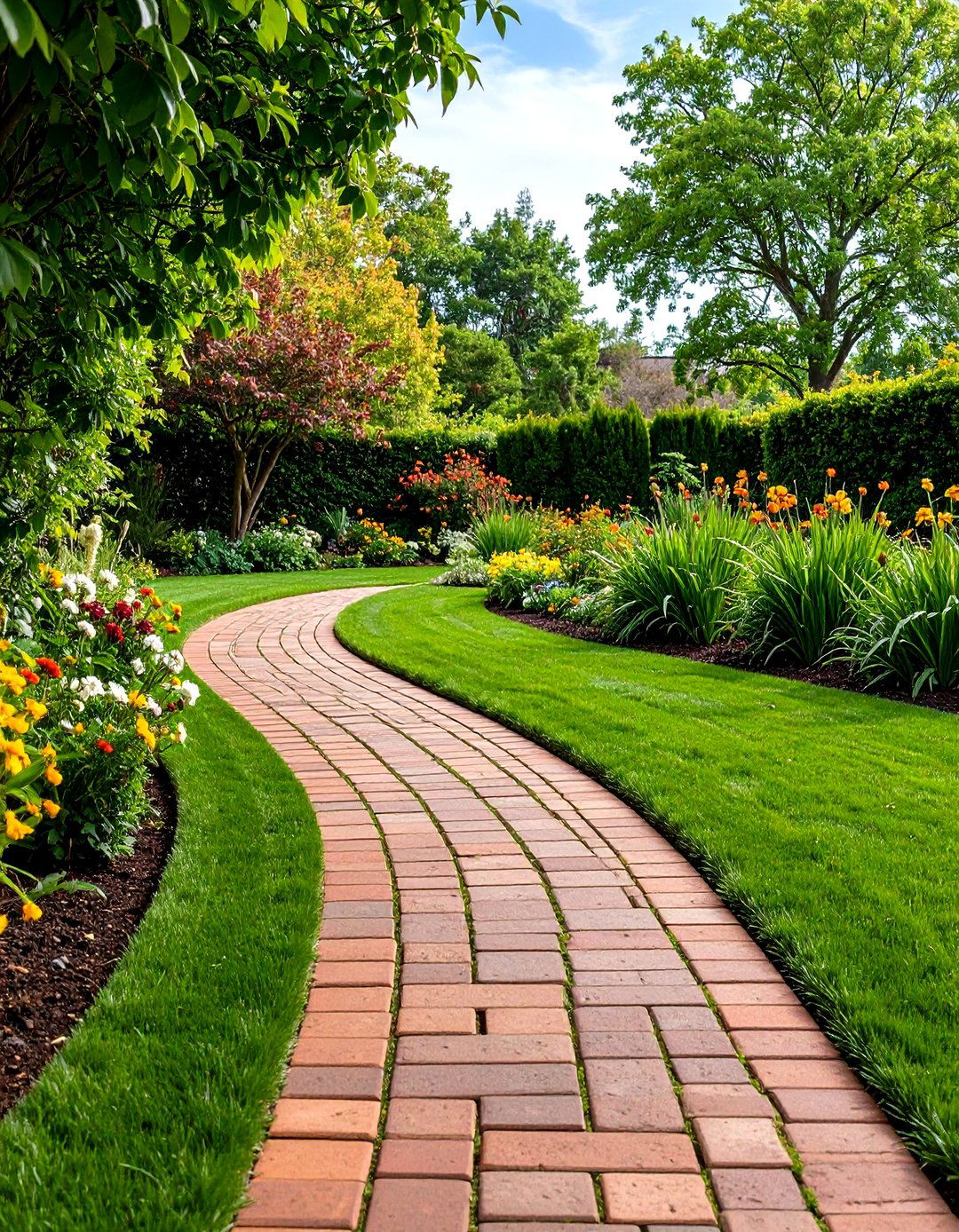

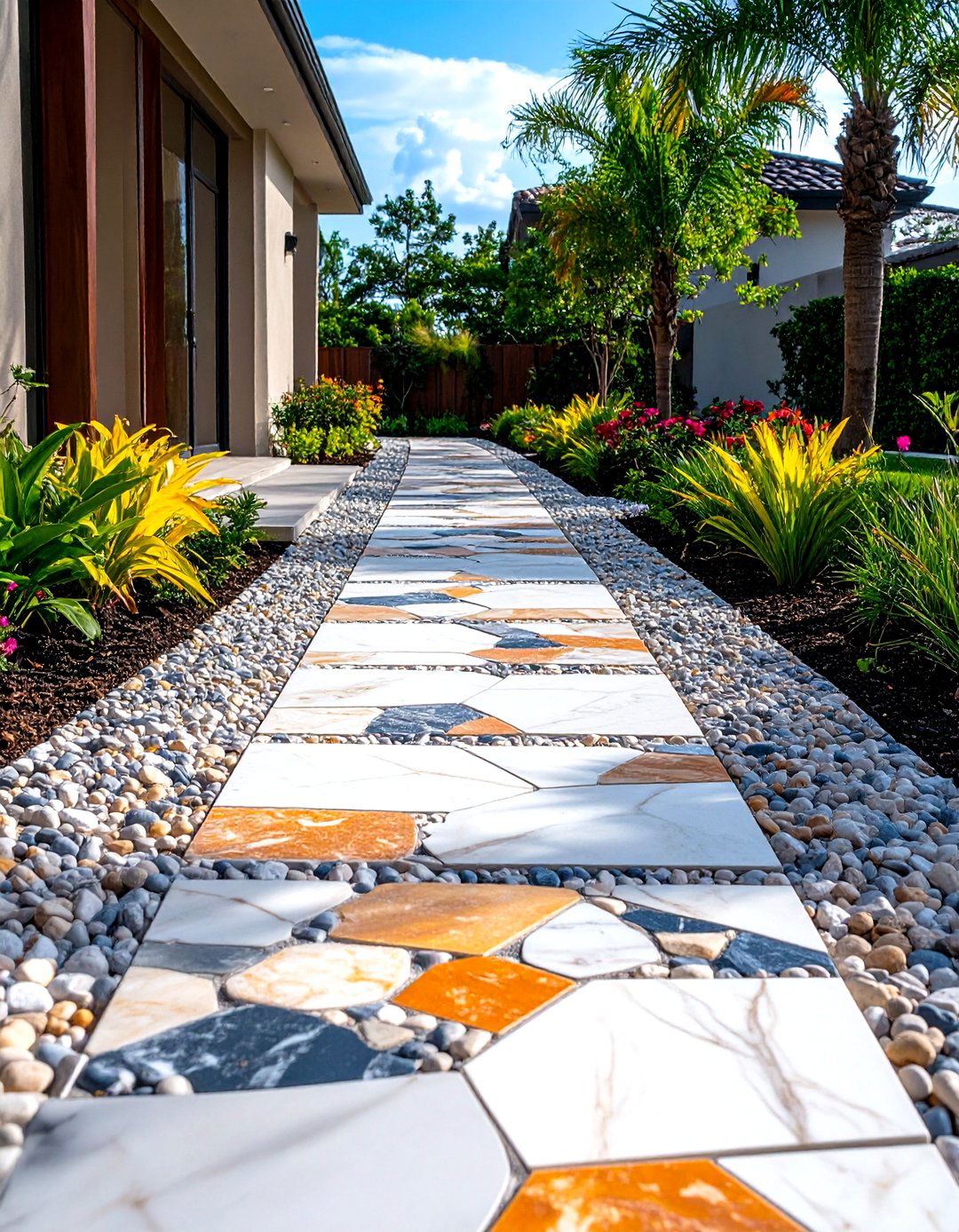
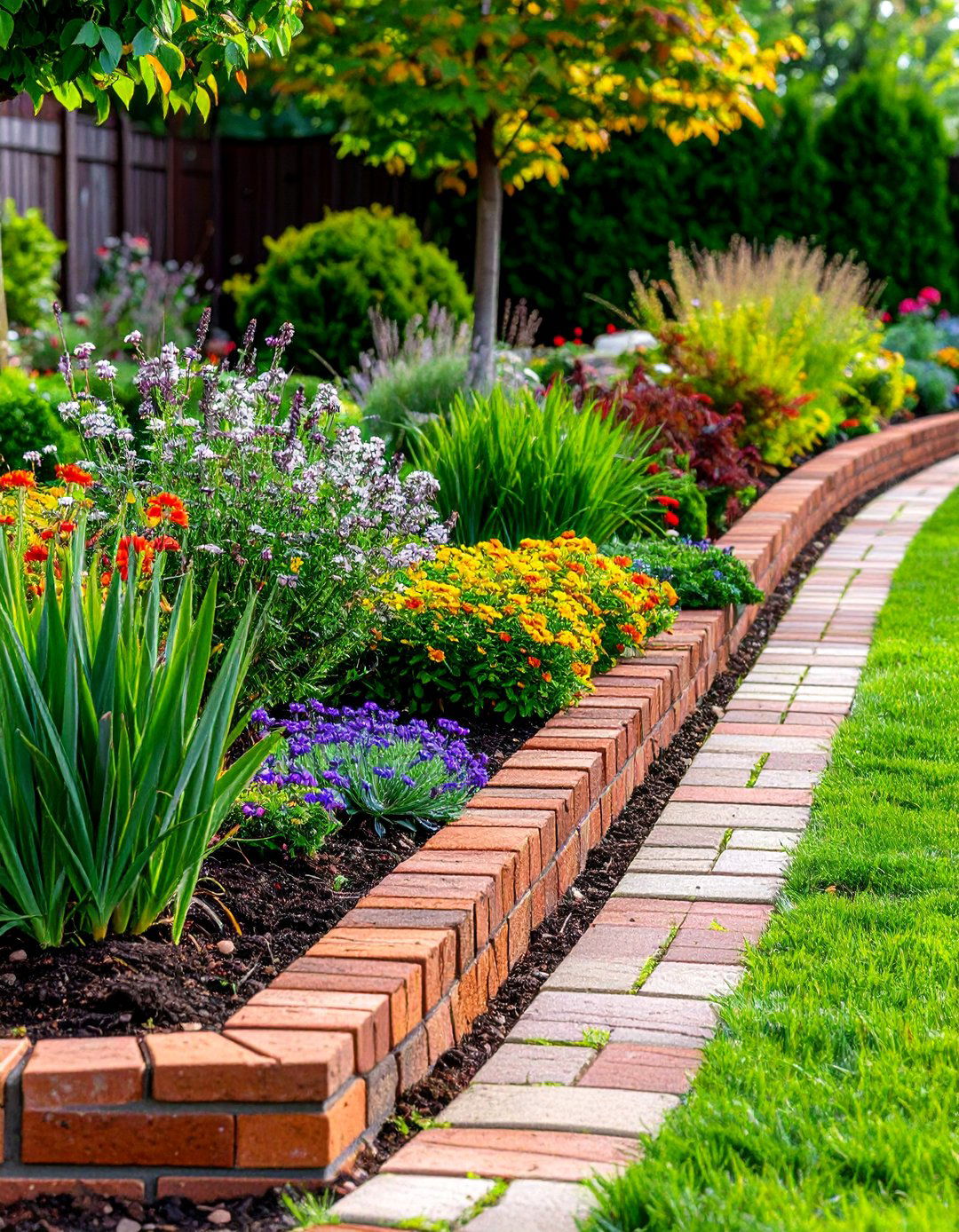
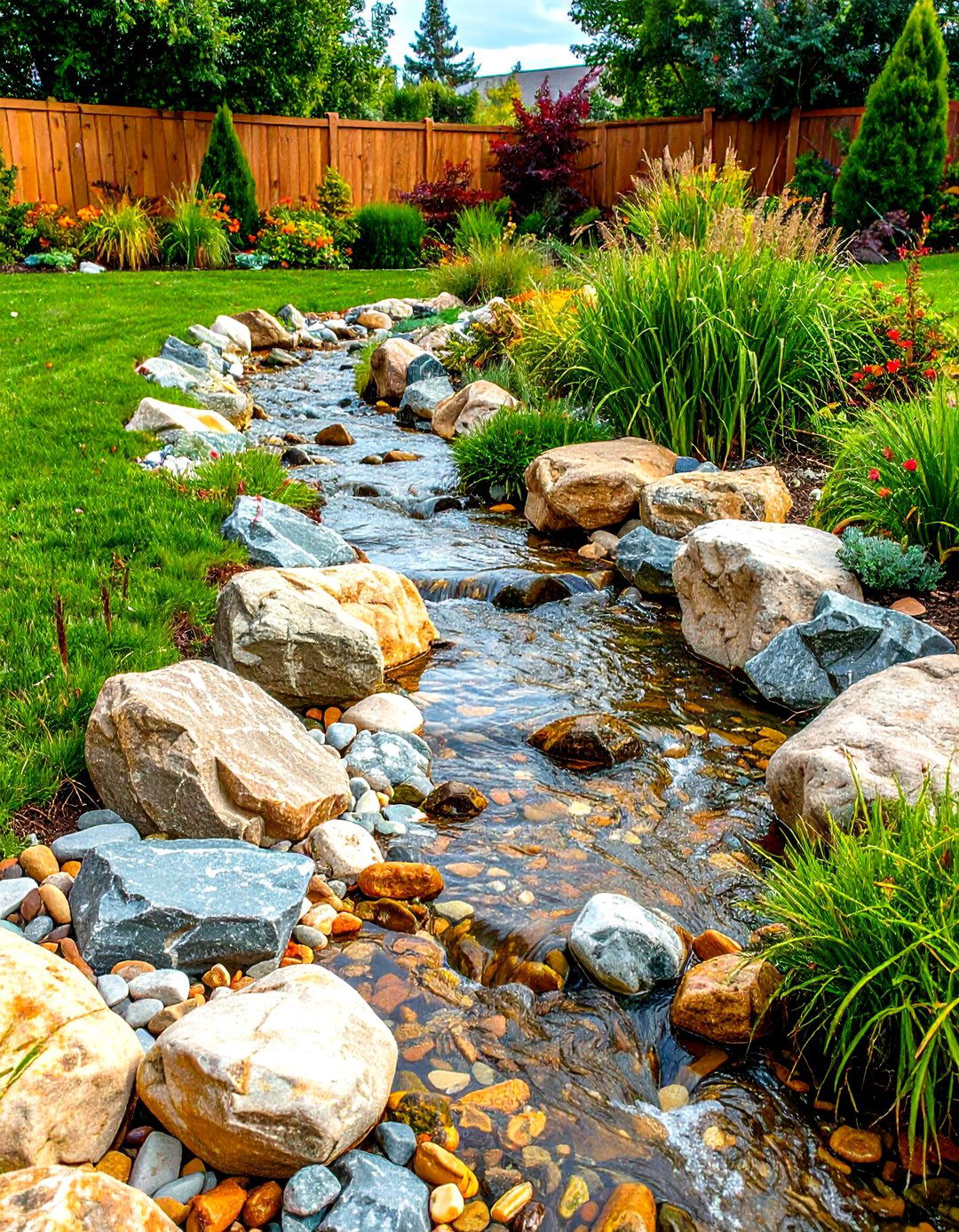

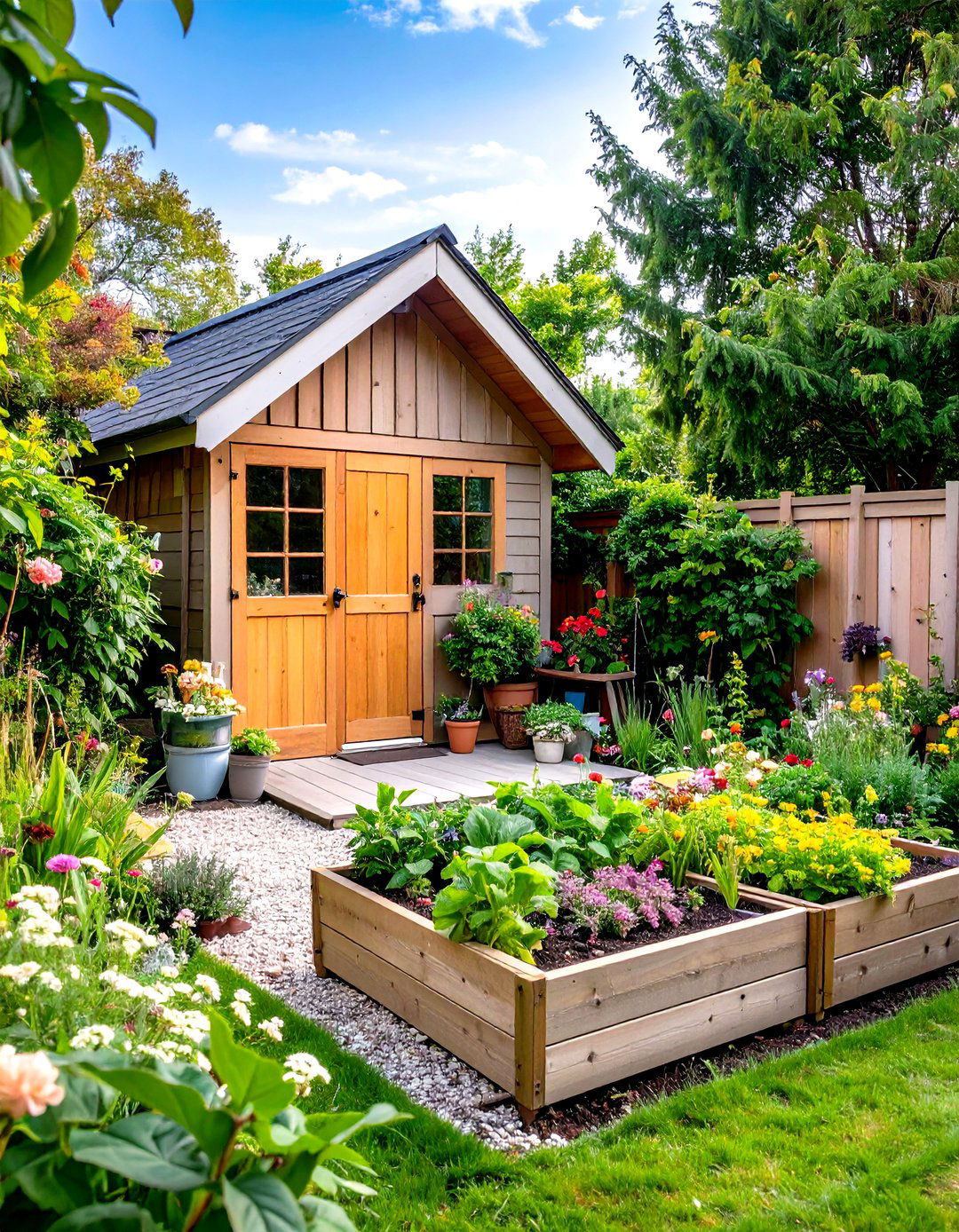


Leave a Reply